
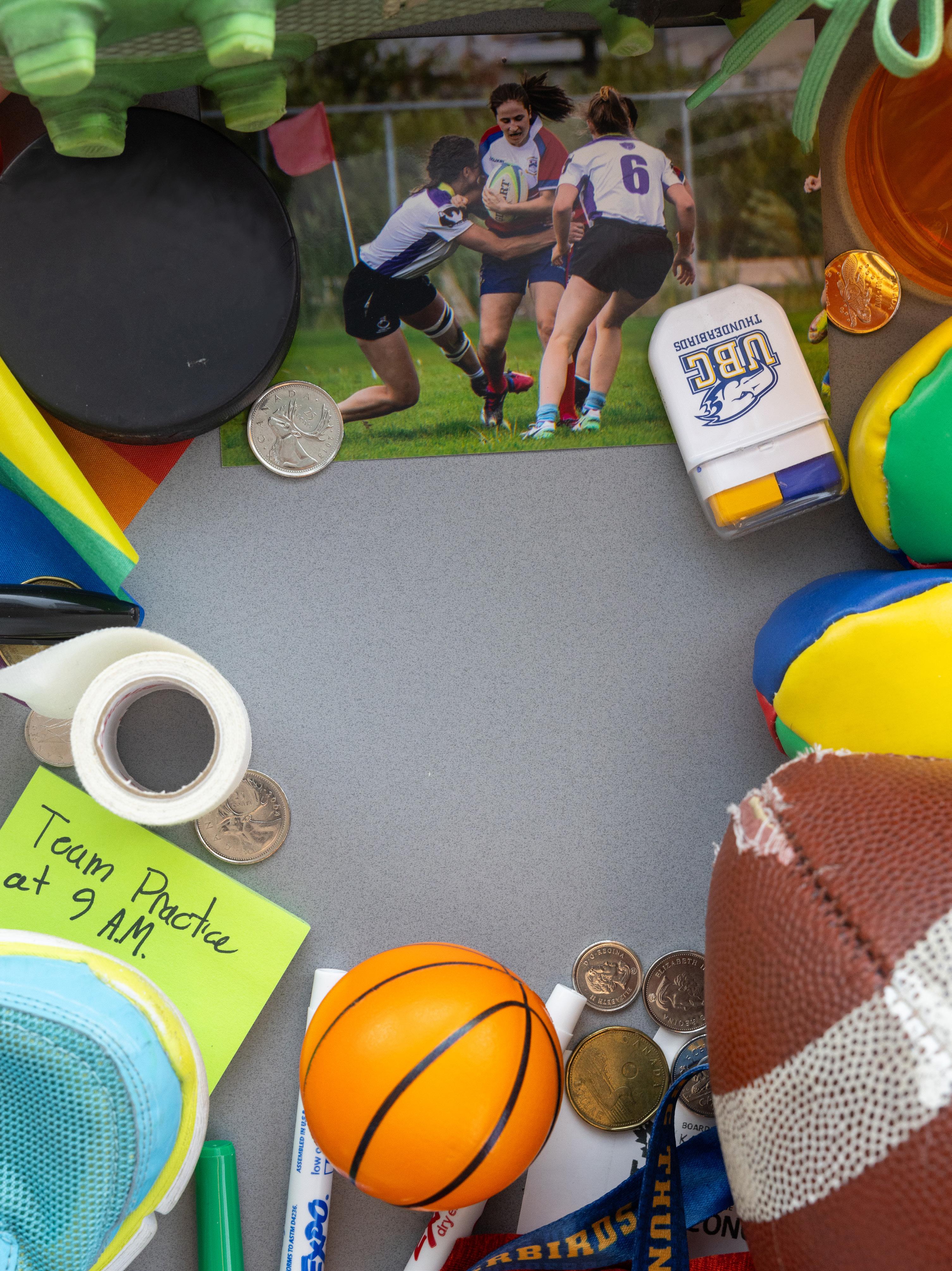
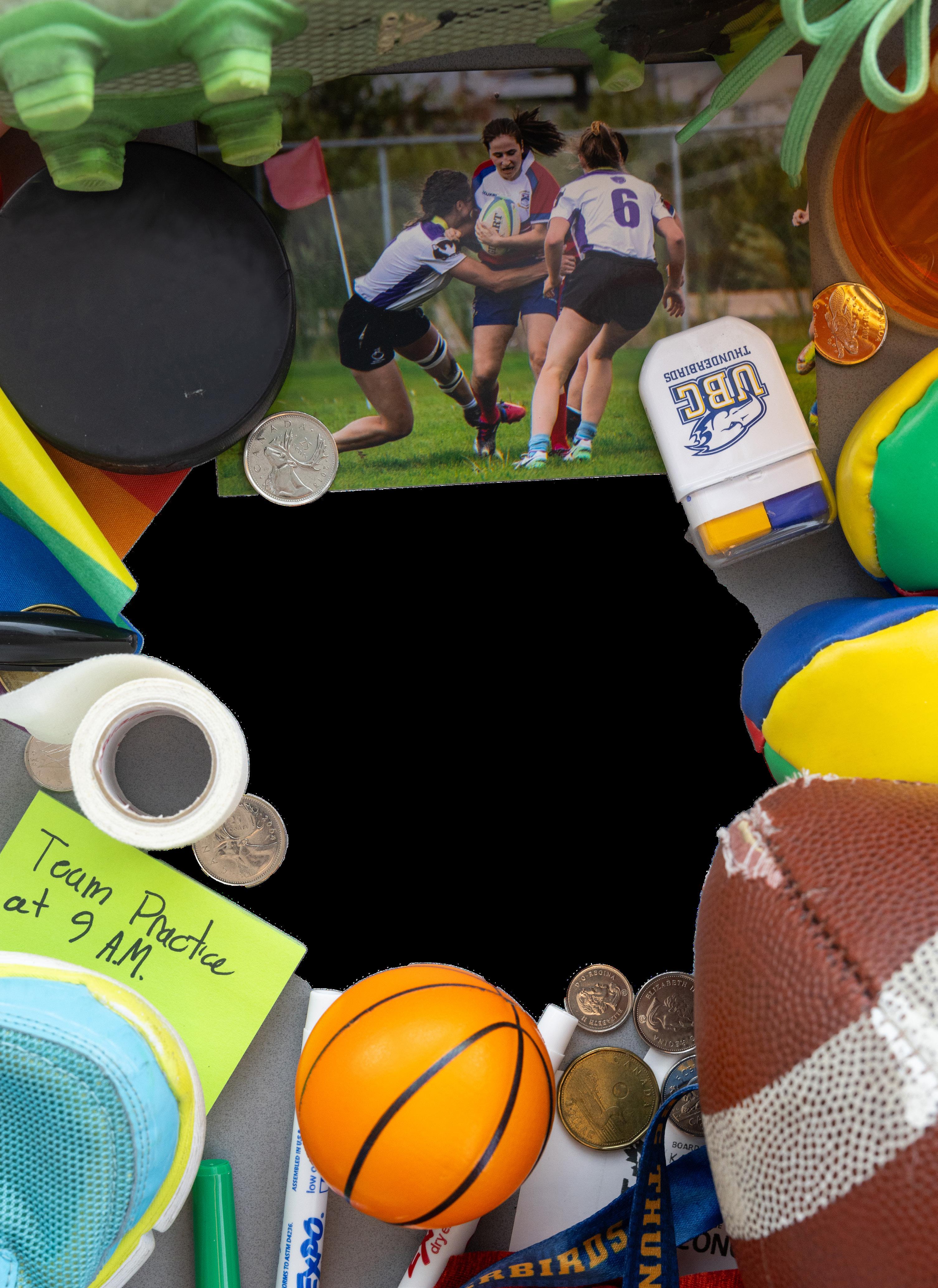
FROM THE SPORTS DESK //7–17 MARCH 19, 2024 | VOLUME CV | ISSUE XIIV WOMEN WIN, MEN LOSE SINCE 1918 THE UBYSSEY U INSIDE THE ISSUE PLACE VANIER HAS DIED — SOON TO BE BURIED // 19 – 20
UEDITORIAL BUSINESS
Coordinating Editor Anabella McElroy coordinating@ubyssey.ca
News Editor Aisha Chaudhry news@ubyssey.ca
News Producer Renée Rochefort news@ubyssey.ca
Culture Editor Elena Massing culture@ubyssey.ca
Features Editor Iman Janmohamed features@ubyssey.ca
Opinion Editor Spencer Izen opinion@ubyssey.ca
Humour Editor Jocelyn Baker humour@ubyssey.ca
Science Editor Tova Gaster science@ubyssey.ca
Sports + Rec Editor Lauren Kasowski sports@ubyssey.ca
Visuals Editor Anya A Ameen visuals@ubyssey.ca
Photo Editor Isa S. You photo@ubyssey.ca
Video Editor Vacant video@ubyssey.ca
STAFF
Business Manager Douglas Baird business@ubyssey.ca
Account Manager Scott Atkinson advertising@ubyssey.ca
Web Developer Brittany Sampson b.sampson@ubyssey.ca
Web Developer Sam Low samuellow@ubyssey.ca
Social Media Manager Jasmine Le social@ubyssey.ca
President Jalen Bachra president@ubyssey.ca
CONTACT
Editorial Office: NEST 2208 604.283.2023
Business Office: NEST 2209 604.283.2024
6133 University Blvd. Vancouver, BC V6T 1Z1
Website: ubyssey.ca
Twitter: @ubyssey
Instagram: @ubyssey
Facebook: @ubyssey
TikTok: @ubyssey
Annaliese Gumboc, Anushka Bellani, Bea Lehmann, Bernice Wong, Bessie Guo, Caleb Peterson, Cynthia Wang, Elita Menezes, Emilija Vītols Harrison, Fiona Sjaus, Gabby Ranu, Gloria Klein, Harry Sadleir, Himanaya Bajaj, Ian Cooper, Ian French, Isabella Ma, Jerry Wong, Julian Forst, Kyla Flynn, Mahin E Alam, Manya Malhotra, Marie Erikson, Maya Rochon, Morris Hayes, Nathan Bawaan, Nicola Roscuata, Olivia Vos, Sam Low, Siyah Basi, Stella Griffin, Trinity Sala, Vicky Nguyen, Zobia Alam, Zoe Wagner
We wish to acknowledge that we work, learn and operate the paper upon the occupied, traditional, ancestral and unceded territory of the Coast Salish peoples, including the xʷməθkʷəy əm (Musqueam), Sḵwxwú7mesh (Squamish), Stó:lō and səli lwətaɁɬ/Selilwitulh (Tsleil-Waututh).
sexism, homophobia, transphobia, harassment or discrimination. Authors and/or submissions will not be precluded from publication based solely on association with particular ideologies or subject matter that some may find objectionable. Approval for publication is, however, dependent on the quality of the argument and The Ubyssey editorial board’s judgment of appropriate content. Submissions may be sent by email to opinion@ ubyssey.ca. Please include your student number or other proof of identification. Anonymous submissions will be accepted on extremely rare occasions. Requests for anonymity will be granted upon agreement from four-fifths of the editorial board. Full opinions policy may be found at ubyssey. ca/pages/submit-an-opinion It is agreed by all persons placing display or classified advertising that if the UPS fails to publish an advertisement or if an error in the ad occurs the


Joanne Pickford is the unofficial mom of the AMS
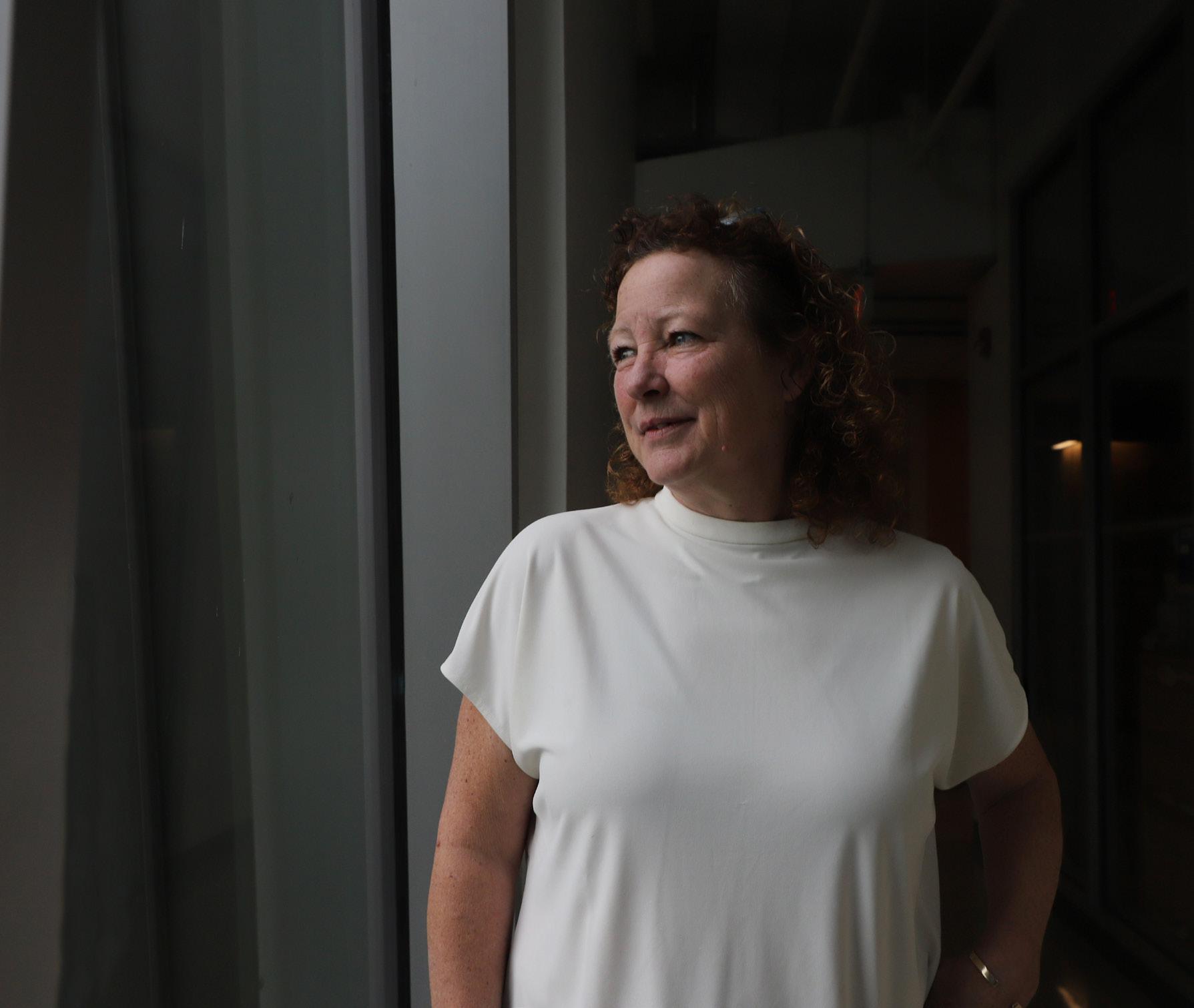
“I love supporting the students,” said Pickford.
Nathan Bawaan Senior Staff Writer
Anyone who has talked to Joanne Pickford knows positivity and joy emanate from her.
Even during a Friday afternoon interview in The Gallery — as bassheavy music blasted through the speakers and students talked over drinks and food at nearby tables — it was easy to stay focused on Pickford, her warm demeanor and smile lighting up the space.
Most students have probably never met or heard of Pickford. As the AMS’s administrative assistant, she mostly works in the background, offering support to the student executives and doing other behind-the-scenes administrative work.
But over the past 16 years, Pickford has helped the AMS’s student executives do their jobs. She is always willing to offer advice and answer questions. Pickford also attends every AMS Council meeting — even when they go into the late hours of a Wednesday night.
“I love supporting the students,” she said, a sentiment she kept coming back to throughout her interview with The Ubyssey
Sixteen years ago, Pickford was between jobs after finishing a maternity contract position with Paprican, now the UBC Pulp and Paper Centre, when an old friend from elementary school gave her a call.
Her friend, who worked at the AMS’s reception desk (and still does), knew Pickford’s situation and told her about a few job openings at the AMS, including for an administrative assistant.
“I was quite excited when I got the call to get this job,” Pickford
recalled, saying she loves to work supporting others.
Pickford also said the job allowed her to stay involved in her kids’ lives, dropping them off at school while on her commute to campus and attending their elementary school performances.
“It gave me something I really like to do and it really fit in with my life.”
While Pickford has continued to show up for work at the AMS over the years, her bosses — the 5 student executives — have come and gone, roughly every 12 months since students elect new leadership during AMS general elections.
Many people would find this constant turnover challenging, but Pickford said she likes the dynamic atmosphere.
“It makes it much, much more interesting … because you’re with new personalities,” she said while likening meeting the newly-elected executives to going on several first dates.
Despite the revolving door of supervisors, Pickford said she mostly continues to do what she has always done — supporting the executives in whatever way they need — while making slight adjustments to fit within the new leadership’s working style.
Pickford’s job as support staff has led executives and other staff members at the AMS to call her the ‘mom’ of the organization — a title she embraces.
“It makes me feel old, but I do take it as a compliment because people love their moms,” she said, jokingly adding that she could be people’s big sister instead.
But like many moms, Pickford often offers advice and guidance
to executives when needed.
“You can impart some kind of life knowledge or things that have been tried in the past or at the AMS and just say, ‘Well, this has been tried, and it was either really great or you might want to think about that one.’”
She also said she tries to let the AMS executives figure things out for themselves as much as possible, but she is always there to support them if things don’t go according to plan.
“I try and leave it as a real growth period for those to learn to crash because this is where they can do that,” she said. “And to hug them if they crash.”
Pickford said she also learns from student executives, saying they teach her about new technology to help her stay current.
Being an unofficial mom also means Pickford does her best to stay neutral during discussions.
During AMS Council meetings, this means sitting back and watching executives and councillors work through different issues.
“Of course, sometimes you think, ‘You guys did great,’ or ‘What were you thinking?’ But again it’s their growing period, and we’re here to support them.”
When asked if she expected to stay this long with the AMS, Pickford said she didn’t really think about it when she first started. Despite that, Pickford has settled into her role — her office holding years of memories, including a “little therapeutic [rocking] horse” that holds student executives’ business cards.
“It’s like any job. You go and if you like it you stay, and if you don’t you gotta make that call and move on.” U
ON THE COVER WHO’S WHO AT UBC PAGE 2 2 MARCH 19, 2024 TUESDAY
The Ubyssey is the official student newspaper of the University of British Columbia (UBC). It is published every second Tuesday by the Ubyssey Publications Society (UPS). We are an autonomous, democratically-run student organization and all students are encouraged to participate. Editorials are written by The Ubyssey’s editorial board and they do not necessarily reflect the views of the UPS or UBC. All editorial content appearing in The Ubyssey is the property of the UPS. Stories, opinions, photographs and artwork contained herein cannot be reproduced without the expressed, written permission of the Ubyssey Publications Society. The Ubyssey is a founding member of Canadian University Press (CUP) and adheres to CUP’s guiding principles. The Ubyssey accepts opinion articles on any topic related to UBC and/or topics relevant to students attending UBC. Submissions must be written by UBC students, professors, alumni or those in a suitable position (as determined by the opinion editor) to speak on UBC-related matters. Submissions must not contain racism,
LAND ACKNOWLEDGEMENT
liability of the UPS will not be greater than the price paid for the ad. The UPS shall not be responsible for slight changes or typographical errors that do not lessen the value or the impact of the ads. LEGAL MARCH 19, 2024 | VOLUME CV | ISSUE XIIV
The Ubyssey periodically receives grants from the Government of Canada to fund web development and summer editorial positions. OUR CAMPUS COVER ISA S. YOU AND ANYA A AMEEN
THE UBYSSEY
ZOE WAGNER / THE UBYSSEY
How UBC students navigate school, work and more
 Bea Lehmann Senior Staff Writer
Bea Lehmann Senior Staff Writer
UBC.
“Life here in Vancouver, is very expensive,” she said, “I didn’t want to miss out.”
The third-year international relations student began working part-time in a bookstore on Granville Island by the end of her first semester and worked around three half-day shifts a week, commuting an hour each way.
Since then, De Pangher has taken on a second job, working remotely as an administrative assistant for a translation company.
De Pangher said she works “just to be okay financially, be able to go on exchange, be stable and put away some money for the future,” although she hopes to work less in her final year.
De Pangher is one of many students who are taking on first and second jobs to afford life in Vancouver, often while also balancing full course loads and other commitments.
Dr. Sylvia Fuller is a UBC professor of sociology, studying labour market inequalities and employment policy. She noted it’s not uncommon for students to be working while studying.
“About half of full-time students, [age] 20-24, have a job, and 80 per cent of part-time students [have a job],” Fuller said.
Fuller also noted the number of students holding multiple jobs.
“7 per cent of full-time students and 6 per cent of part-time
students hold multiple jobs,” Fuller said. “That’s pretty similar to non-students in that age range, which is interesting because students also have coursework on top of that.”
Even just balancing one parttime job along with school can heavily eat into a student’s time.
“I would say juggling school and employment could be seen as a kind of multiple job holding,” Fuller said. “Your schoolwork is something that’s demanding a considerable amount of your time.”
Students may be working multiple jobs for a variety of reasons, including economic necessity, as tuition fees, housing and food costs rise.
“Often people are working multiple jobs … because they aren’t earning enough in their main job,” Fuller said. “More people are feeling pinched.”
However, she added some people work multiple jobs not out of necessity, but to spend time on something they are passionate about, but can’t cover the bills alone. Students may also take on jobs in order to build up work experience.
Robbie Laughlen, who is in his fourth year studying computer science and physics, also works two jobs to cover living costs. For 10 hours a week, he is a Work Learn student for UBC IT, and in his free time, he freelances as a computer scientist.
One of his main concerns is building up work experience prior to graduating.
“The job market [is] so competitive that courses are the least of your worries, you have to do proj-
ects or hackathons or make sure you’re constantly doing something that makes you stand out,” he said.
Through her jobs, De Pangher was able to save up for a semester abroad. Leading up to the semester, however, she had to carefully plan her school and work schedule.
“I made it in a way that I had two full days of classes,” she said. “They were not necessarily classes that I wanted to take. But they were the only ones that matched my work schedule as well.”
In the most recent Canadian University Survey Consortium, six out of ten surveyed students worked at least one job.
Of those, 44 per cent reported that working negatively impacted their academic performance.
On her part, Fuller has reduced her reading expectations for the courses she teaches as she has seen her students face increasing outside of class obligations.
“I teach courses in work,” Fuller said, “I know that they’re juggling that along with their schoolwork.”
Working four shifts a week on top of a full course load during the fall semester led to De Pangher feeling demotivated.
“I didn’t want to put that extra effort into [schoolwork] because I was tired,” she said.
Fuller said the type of work that students engage in can impact the stress they experience.
“But another issue that’s really important for students … is how predictable student schedules are,” Fuller said. “One of the things that creates more stress for students is … where they’re not in control of their schedules, or they’re getting their schedules at the last minute.”
“That makes it really hard to plan, having a social life, it makes it hard to plan around school, and when assignments are due, things like that.”
Once she began working, De Pangher found that she often had to miss out on university events she wanted to attend due to her work schedule.
“I couldn’t go to certain activities organized by my department,” De Pangher said, “I could never participate because every time it would [conflict] with my schedule.”
“I thought it was really frustrating and it did impact my mental health. I got a bit sad.”
Prior to taking on a second job, when Laughlen had a few extra hours, he would attend volleyball drop-ins or other on-campus activities.
“Those little whimsical things make it fun, that you can be on campus and enjoy university,” he said. “When you have these things that ... eat into your schedule … you feel a bit more trapped in your routine.”
Fuller also spoke about the potential health risks with working long hours or multiple jobs.
“People are under more stress in that situation, and stress often is cumulative, and it has implications for folks,” Fuller said. “People just don’t necessarily have time or energy to exercise, sleep suffers.”
However, jobs can also be interesting and rewarding, and help students develop the knowledge and experience needed for after graduation.
“The nature of the jobs that students have also makes a difference,” Fuller said, “If you’re work-
ing a job that’s really tied to your career path, and it has reasonable hours … that can be really positive, and gives you valuable skills.”
Dibbya Dasgupta is an international masters of science student from Bangladesh at the School of Population and Public Health. Prior to arriving, he knew he had to secure a job.
“My concern was I have to get [a job], otherwise I cannot survive here,” he said.
Dasgupta was able to get a job through his supervisor that uses statistical skills he developed during his previous degrees.
“I’m glad that I’m working because it is complimenting my studies,” Dasgupta said.
However, finding these types of opportunities can also create stress.
Laughlen is currently searching for an internship for his co-op term in order to build job experience.
“If you’re searching for a lot and you don’t get anything, it’s fairly time intensive,” Laughlen said. “Then you’re thinking, maybe it’s an issue with my resume, maybe I’m not impressive enough to these people, I gotta do more projects ... expand the resume.”
De Pangher agrees that working is valuable for building skills, but at a cost.
“At the end of the day, it is a good point that you work while you study, for a future employer,” she said, “Because they can see you can balance work-life and study-life and personal life.”
“But you’re still missing out on some things, you just have to accept it.” U
EDITORS AISHA CHAUDHRY + RENÉE ROCHEFORT NEWS MARCH 19, 2024 TUESDAY 3 WORKING 9 TO 5 //
Agata De Pangher quickly realized she needed to get a job after arriving in Vancouver to start her studies at
“But you’re still missing out on some things, you just have to accept it.”
THE UBYSSEY
Breaking down UBC’s 2023/24 enrolment report
Renée Rochefort News Editor
Every year, UBC releases an report filled with data on student admission, enrolment and retention rates. And, annually, we break down the 60-something pages of information for our readers.
In the 2023/24 admission cycle, UBC reviewed just over 52,000 application for admission according to the report, a slight decrease from the 56,000 received during the 2022/23 admission cycle.
Personal profiles are read by at least two readers and judged using a UBC’s grading rubric which assesses things like leadership, problem solving and community involvement. The grading process is somewhat secretive, but The Ubyssey obtained the rubric in 2019.
The enrolment report added that 12 per cent of students admitted would not have been if not for the personal profiles. This percentage has stayed consistent since the 2012/13 academic year, when the system was first implemented.
Out of that number, UBC Vancouver (UBCV) admitted 52 per cent of undergrad applicants, while UBC Okanagan (UBCO) admitted 76 per cent.

Forty-three per cent of students admitted to UBCV graduated from high schools in the Lower Mainland and thirty per cent came from schools outside of Canada.
WHO’S AT UBC?
Across both campuses, UBC has 72,776 students — broken down, that’s 11,913 students at UBCO and 60,863 at UBCV.
In terms of Indigenous representation, there are 1,557 Indigenous students at UBCV and 774 at UBCO — representing around
a 28 per cent increase since the 2019/20 academic year. Most students are from BC.
According to the report, 6.6 per cent of UBCO’s student body and 2.6 per cent of UBCV identify as Indigenous.
WHO MAKES UP THE INTERNATIONAL STUDY BODY?
The international student body is diverse, representing over 160 countries across the campuses with China, the United States and India being the three most represented countries.
Thirty-two per cent of international students at UBC last year held Chinese citizenship even though the number of Chinese undergraduate international students has dropped since 2019/20 for both campuses.
The number of Indian international students has increased five-fold since 2013/14.
DO STUDENTS RETURN YEAR AFTER YEAR?
Overall, retention rates at UBC are high — the report finds 94 per cent of domestic students and 91 per cent of international first-year students stayed at UBCV between the 2022/23 and 2023/24 academic years.
Indigenous students’ rates are lower with 82 per cent of students returning to UBCV after the first year of their undergraduate degree.
The report also notes that most undergraduate students at UBCV completed their degrees in 4.5 years — a trend TheUbyssey noted last year.
The majority of graduate students at UBCV take five years to complete their PhD. The Graduate Student Society has called the increase of the PhD stipend to increase from four to five. U
University Transition Program temporarily suspends admissions following mental health concerns
 Morris Hayes Staff Writer
Morris Hayes Staff Writer
The University Transition Program (UTP) suspended its admissions for the 2024/25 school year pending an external review following concerns regarding students’ mental health.
The UTP is jointly run and funded by the Ministry of Education and Childcare, the Vancouver School Board (VSB) and UBC, which hosts the program on campus.
Since 1993, the UTP offered 20 BC students, recognized as academically gifted, the opportunity to complete their secondary education in an accelerated two-year curriculum, allowing them to enter university as early as age 15.
The UTP has come under scrutiny over allegations that students didn’t receive enough support, and concerns around a “negative culture.”
In a statement to TheUbyssey , the BC Ministry of Education and
Childcare wrote, “The decision to conduct an external review and pause the admission process was made by the ministry and the VSB in consultation with UBC in response to significant concerns raised about interactions within the school community that have impacted the mental health and well-being of some students.”
The review will be conducted by the Deetken Group, a Vancouver business management consultant firm, and will be “comprehensive, exploring various aspects of the program from the perspectives of current students, their families, staff and alumni,” according to the Ministry.
Both the Ministry and the VSB emphasized that plans have not yet been made regarding the future of the UTP, and any changes will depend on the findings from the Deetken Groups’ review.
“The program will continue to operate for student who are cur-
rently enrolled,” wrote the VSB in a statement to TheUbyssey , adding that the program has not been terminated.
The VSB wrote that UTP admissions were suspended to “allow time for completion of the program review and examination of recommended changes.”
“This decision was made with careful consideration and reflects our dedication to the mental and emotional welfare of students and their families. The gravity of the identified concerns requires us to take prompt and decisive action to prioritize the well-being of students.”
SOME COMMUNITY MEMBERS OPPOSED TO SUSPENSION
Jonathan Chan, a UTP alum and second-year UBC pharmacology student said he feels there has been a lack of communication between the tri-organization coalition and UTP parents and students leading up to
 Aisha Chaudhry News Editor
Aisha Chaudhry News Editor
This year’s AMS Elections saw the third highest voter turnout in AMS history at 21.1 per cent.
While no Vice-President positions had any incumbents running unlike the Senate and Board of Governors races, everyone elected had either worked in the AMS, been an AMS Councillor or worked as a constituency executive.
AMS Council has yet to approve these results, making them unofficial. TheUbyssey broke down any interesting statistics so you don’t have to.
AMS Elections uses an instant run-off or single transferable vote system. Under this system, voters have the ability to rank any of the candidates in order of preference.
the decision’s announcement.
“In my view, I think it should have started with consulting with students, with parents, with alumni, before the VSB made any rash decisions like it did. This review is about the mental health of students, right? So why didn’t they talk to students before pausing admissions?”
Chan also noted a petition calling for a halt on the suspension of UTP admissions, which at the time of writing has garnered over 1,300 signatures, as proof of an upset community.
The petition writes the UTP “is a vital resource for a uniquely vulnerable and often overlooked section of the student population.”
Chan said he resonated with this sentiment as he felt unchallenged and overlooked in traditional school before enrolling in the UTP, where staff are trained specifically in accelerated education for gifted students.
He is worried the decision to suspend UTP admissions fits into a larger trend of rolling back programs aimed to aid gifted students. Across the country, gifted programs have been the source of debate about elitism and exclusivity.
Chan and other advocates argue these gifted programs do in fact embody an equitable approach to education, in providing students with the appropriate help that they need, rejecting a one-size-fits-all approach.
“It’s a more tailored educational experience,” he said. “It was stressful. But I want to emphasize … I knew that it was going to be challenging.” U
This year, however, did have the highest amount of voters in a presidential election with 10,977 students casting a vote, beating last years by 140 votes.
The most contested races were Senate with nine candidates and Board of Governors with eight candidates.
The presidential race was also the most contested AMS executive race this elections season and in the first round of votes, Christian ‘CK’ Kyle garnered 37.7 per cent of the votes, followed by Alexandra Smith with 21.9 per cent, Brandyn Marx with 15.3 per cent and Shaun “The Bulldozer” You with 6.8 per cent — 18.2 per cent of students abstained from voting.
This year’s overall abstention rate was also much lower than last year, which saw an average of around 40 per cent of students abstaining in most races. The most amount of abstentions this year was 30.1 per cent in the VP external race.
VP academic and university affairs, external and finance all had two candidates, and each race saw the winner win by over 60 per cent — the largest voting discrepancy being in VP finance where Gavin Fung-Quon won by 68 per cent.
There was only one referendum this year, which stipulates the VP finance must create tri-annual financial strategic plans. It passed with 90.2 per cent of the vote for and only 9.8 per cent against. U
4 | NEWS | TUESDAY MARCH 19, 2024 WE NEVER MISS //
ON A BREAK //
“The program will continue to operate for student who are currently enrolled,” wrote the VSB, adding that the program has not been terminated.
ISABELLA MAGGIORE / THE UBYSSEY
ELECTIONS 2024 RESULTS ANALYSIS
/ THE
ISABELLA FALSETTI
UBYSSEY
More than a game
People love gaming, but sometimes we forget our roots: boards and pieces laid out on a table top.
Games are a fun way to pass the time, but they’re also arenas to unlock competitive instincts, form memories and build community. They’re practice for the real world and also shape it.
In these essays, six Ubyssey writers reflect on the ways that games — and the experiences and memories that come with playing them — have shaped who they are today.
POKER TO PSYCHOLOGY
I’m four-years-old, legs dangling off a dining room chair and my mother’s ridiculous sunglasses hiding more surface area than just my eyes. It’s a Friday night — the newly instated poker night in my household.
My father sits across the table wearing a stoic expression, while my older brothers are on either side of me. Whether it was being involved in a “grown-up game” or the brightly-coloured illustrations on the playing cards that appealed to me, it was safe to say I felt exhilarated.
By six, I could clean out my entire extended family, including a new in-law who was probably confused to see me even playing in the first place.
We kept up poker night for years to follow, and I began to play more tactfully as my beginner’s luck ran out. I studied my opponents’ faces, trying to determine whether they were betting on a losing hand or losing on what could be a sure-shot win.
A curved mouth, nervous rambling, refusal to make any eye contact. As non-professional poker players, their tells were easy to guess. And I, a nervous giggler, was honestly no better. It became less about winning and more about reading the room, trying to anticipate someone’s next move.
Now I study psychology for pretty much the same reason I continued to sit at that dining table, even long after I had run out of chips.
I love reading people — listening to how someone’s voice drops when they’re embarrassed, picking out the exact moment a conversation will grow awkward or being able to decode someone’s mood from the second I walk through the door.
The brain is complicated, messy and unique. The mystery of psychology is how much of the mind remains unexplored. We know how neurons work, but what makes people tick? Why do people do hurtful things? Why don’t people bet on a hand they have a chance at winning?
And, perhaps the most important thing poker taught me, was that like our brain, you can’t change your cards — only what you do with them.
— Zara Khan
FINDING MY FATHER IN THE ROUNDS OF A BOARD GAME
It is through the shuffling of cards,

distribution of chips and moving of pawns that I connect most with my father.
We’ve lived apart for most of my life, so I see him sporadically throughout the year. During one of these visits a few years ago, he arrived with the game Pandemic nestled in his suitcase. The game follows a team of scientists, medics and researchers as they attempt to find cures for diseases breaking out globally and, as its name suggests, prevent a pandemic from happening.
We played it at least 22 times during that visit and lost every game. It wasn’t until the next time he returned that we mastered it. Now, the question is not whether we’ll beat the game, but how quickly.
It still takes all of our focus. There are no phones, no small talk and no one dares disturb us as we sit tucked into the corner of the dining table for hours.
I often race home from school, hoping to catch him before he drifts off to sleep. When we play the game, it is one of the only times he isn’t being pulled between his doting mother or eager brothers or excited friends. But I can’t blame them for wanting his time — am I not just like them?
While the only thing we talk about during the game is strategy and our next move, it feels like
the closest I will ever be to him, because his attention is mine — and only mine. I get to be selfish and ask to play another round and talk to him for more than our usual five-minute phone calls every month that never scratch the surface of anything important.
But like the game, his visits also come to an end. The board game returns to the top of the closet to collect dust, untouched until he returns.
— Aisha Chaudhry
IT RUNS IN THE FAMILY
Ticket to Ride is where the story starts: A board full of train tracks to different cities, packs of multicoloured plastic trains and cards with routes to complete. Seems simple enough.
The first time I played TTR (as the pros call it), I was in a fourthgrade board game class. Although I was taught the rules incorrectly, I loved it. The strategy, the competition and, most importantly, the adrenaline rush when you finish your routes in the nick of time. I couldn’t get enough of the game.
Naturally, I brought it up to my parents when I got home. My mother rolled her eyes as I stepped closer and closer to being a “nerd,” as she would put it, but
my dad couldn’t have been more enthusiastic. One of his kids was finally old enough, and competent enough, to play a game on his level. Sequence for Kids step aside — TTR was here to stay.
After you play enough of the same game, it becomes time to learn a new one. After TTR came Settlers of Catan, Pandemic and The House on Haunted Hill. The games kept getting more complicated, but I mastered every one.
A few years later, my younger sister decided to play with us. She was only 12 at the time, but she caught on just as quickly as I had when I was her age. Although I knew more than her, she was a threat to the board game hierarchy in our household, and possibly to my time with my dad as well.
I had stopped playing games by the time I left for university. The feeling of competition wasn’t something I enjoyed anymore. When my dad and I played, it was just for fun, but something about my sister joining made me want to win, to beat her and prove that I knew more. I was older and smarter, but somehow I would still lose, so I gave up altogether.
She took the title I earned in the fourth grade and still wears it today. Although I mourn my position being passed down, I love watching her grow into herself and also reflect parts of me.
I still play games every once in a while, but the title of best player now belongs to her.
— Olivia Vos
PLAYING TO WIN
When I was younger, family game nights were a staple in my house. We would all sit down together after dinner and pick a game to play before my brother and I had to go to bed. My personal favourite for game nights was Monopoly Jr. — the dice always rolled in my favour, the little red houses that dotted the board were almost all mine and I won every game.
As I got older and we started playing regular Monopoly, I found I wasn’t able to succeed the way I had when I was younger. I rarely landed on Boardwalk or Park Place, and I could never figure out when to put up a house or a hotel. I never won and lost all patience for Monopoly, so now I avoid it at all costs.
To me, my newfound hatred of Monopoly is symbolic of my larger transition to mediocrity, specifically in the realm of academics.
Around the same time I became an average Monopoly player, I also became an average student. I was no longer the person others would come to if they didn’t understand
EDITOR ELENA MASSING CULTURE MARCH 19, 2024 TUESDAY 5 ON THE (BANANA)GRAM //
“To me, a perfect night with friends is a night spent sitting at the table together, letting our imaginations run wild.”
AYLA CILLIERS / THE UBYSSEY
the material. I went from someone who was reading way above their grade level to being lucky if I could muster up the motivation to start my readings at all.
Instead of extraordinary, I’m just a burnt-out university student, which is probably the most average thing someone can be at this age.
I realized I have a habit of turning things I like into monopolies. Things that are supposed to be enjoyable are ruined by my need to force expectations of success upon myself.
Seeing as I can’t give up on my academics like I did Monopoly, I’m trying to find a way to balance achievement and finding fun in the process. The best way I have found to do this so far is to study with friends or listen to music to associate studying with things I enjoy. Ensuring that I live a balanced life outside of school also helps me find more things to define myself by than just my schoolwork.
One day, I hope to get to a place where I care a bit less about always performing at my best — and maybe I’ll even play Monopoly again.
— Daniella Bawa
IT’S NOT JUST A GAME IT’S STORYTELLING
Board games are my everything. Nothing beats cracking one open during a family gathering or having a game night with friends.
One stands above the rest. Some might not consider it a board game — which is a matter of semantics — but to me, Dungeons and Dragons (D&D) is everything a board game experience should be.
D&D is a tabletop roleplaying game that uses stats tracked on character sheets and a 20-sided die for many of the ‘ability checks’ in the game. It encourages creativity and friendship, and the possibilities are endless — literally anything can happen if you roll the right numbers.
The Dungeon Master (DM),

“Whether it was being involved in a “grown-up game” or the brightly-coloured illustrations on the cards that appealed to me ... I felt exhilarated.”
in simplest terms, runs the game. Every enemy the players fight, every townsperson they barter with, every trap sprung in a dungeon and every environment they find themselves in — all of that is up to the DM’s discretion.
As the DM of my D&D group, I find it incredibly liberating to exercise my creative juices and build an enjoyable experience for my friends. The creative collaboration between the world the DM creates and how the players choose to interact with it is what makes D&D so special.
It’s not just a game — it’s collaborative storytelling. As we play, the ideas I have written down rarely pan out in the ways I predicted them to, but that’s the beauty of the game. There have been times where I’ve planned multiple contingencies and all of them failed, with the antics of my friends ultimately driving the game forward.
D&D encapsulates everything a game should be. To me, a perfect night with friends is a night spent sitting at the table together, letting our imaginations run wild.
— Tommy Chung
THE GAME OF LIFE
The Game of Life never struck me as particularly complex — until I became an adult.
Of all the board games I had as a child, Life was the simplest: it’s entirely based on luck, with little to no strategy needed. But as I’ve gotten older, many aspects of the game have become inextricably tied to the world around me.
From its beginning, the game is riddled with every milestone you must conform to, starting with college (assuming you want one of the higher-paying jobs). The implication here is, of course, that

your life really starts when you become an adult.
This is true in some ways. A lot becomes clear about the world once we hit the ripe old age of 18. New responsibilities are suddenly added to what was previously a much simpler life. Childhood doesn’t really count as having truly lived because, for the most part, we weren’t the ones making major life choices.
But in another sense, this is completely wrong. There is so much about our childhood that determines how we live as adults: the types of people around us growing up, the values with which we were instilled and whether or not we showed greater emotionality. These are all factors that set us up for the “start” of our lives as adults.
The game offers little range in careers, which makes some sense, given that you can only fit so much of the world in a small
TITUS
box. But it’s interesting to look at what options it presents children with — you don’t have to go to university, but you’re less likely to win the game if you don’t.
In a way, it represents a conventional North American mindset, where one of the main reasons for doing anything is to get rich. “Winning” means to have the most money — to get lots of money, you need to have time, energy and resources, but to have these things, you need to have a whole lot of luck.
Luck plays a substantial role in our real lives: we didn’t choose our experiences growing up, and we don’t always have a say in what we’re granted in the adult world. The game shows us that life isn’t fair — not everyone can win, and that is simply a fact with which we all must make our peace.
— Hasti Amirsalari U
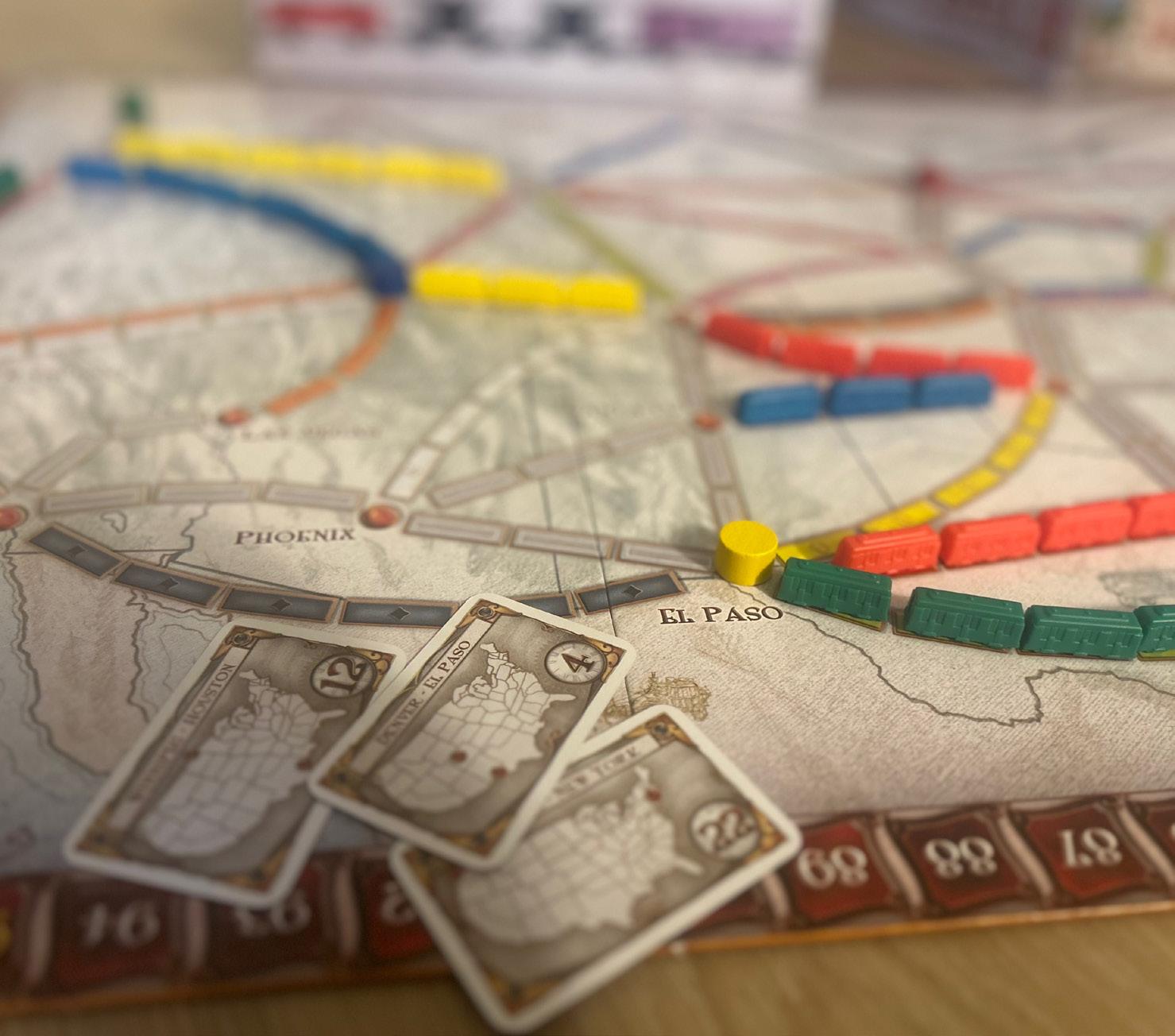
6 | CULTURE | TUESDAY MARCH 19, 2024
ANYA TITUS / THE UBYSSEY
ANYA
/ THE UBYSSEY “Anything can happen if you roll the right numbers.”
ANYA TITUS / THE UBYSSEY
“Ticket to Ride is where the story starts...”
EDITOR LAUREN KASOWSKI
PHOTOS ISA S. YOU DESIGN ANYA A AMEEN


SPORTS+REC JANUARY 23, 2023 TUESDAY 7
EDITOR LAUREN KASOWSKI

For the Queer hockey community, it’s more than just rainbow tape

In 2022, I moved from the United States to Vancouver, and in hopes of bonding with my new Canadian coworkers, I started learning about hockey. I knew vaguely that Vancouver had an NHL team, and that my hometown of Seattle had recently established a team.
What developed was a newfound obsession, confusing everyone in my close circles. I don’t fall into the target audience of NHL marketing being a Queer, neurodivergent femme person. But the community of other Queer hockey fans I found only nurtured my growing love for the sport.
My little bubble in the online sports fandom is ultimately pretty rare. Homophobia, sexism and racism are still spouted across sports forums like Reddit, Instagram and X (formerly Twitter). It’s easier to ignore the outpouring of hate in these spaces when you look at the league’s initiatives supporting marginalized fans and communities.
In 2013, the NHL made history by being the first major league sport to partner with an 2SLGBTQIA+ outreach program. This partnership eventually launched the “Hockey is for everyone” initiative which encouraged the diversification of hockey fans and players, hoping to redefine the stereotypical idea of who belongs.
Within the past decade since the initial collaboration, the league has seen hundreds of specialty jerseys for varying social causes, communities and holidays. But unfortunately this came to a screeching halt.
Pride Nights became a hot topic of debate in the NHL’s 22/23 season. A handful of players across the league stated they would not wear a
by DELANEY AGODON
pride-themed warm up jersey citing various reasons, ultimately sparking the debate on if “politics” have a place in hockey. These community-themed game nights are not based in politics.
These nights, specifically Pride Night, are meant as a statement of acceptance and inclusion within every part of the organization, serving fans, staff and athletes. What occurred through the rest of the season varied from team to team; the New York Islanders and the Minnesota Wild decided to host Pride Night but scrap their specialty jerseys. Other teams such as the Vancouver Canucks, San Jose Sharks and Florida Panthers opted to have the non-participating players sit out for warmups.
Of course, this was only the beginning. In the summer of 2023, NHL Commissioner Gary Bettman announced a ban on all specialty warmup jerseys, and before the season even started, he announced a ban on the use of Pride Tape.
Pride Tape is a company that makes rainbow stick tape to promote equality and tolerance within the sport. It was quickly adopted into the NHL, being backed first by the Edmonton Oilers and used in Pride Nights across the league.
While the ban on specialty jerseys was not inherently anti-Queer, since it wasn’t just targeted at Pride Night but at all theme night events, the ban on Pride Tape was a direct hit against the 2SLGBTQIA+ community.
Queerness and sports have been in a complicated narrative since the dawn of time, but after ten years of supposed support from the league, watching the NHL buckle as anti-Queer
rhetoric is becoming louder each day, isolates fans, athletes and anyone that could be interested in hockey. The NHL’s choices echo the most toxic parts of the sport’s culture, amplifying the voices that constantly say hockey is not for everyone.
Being a Queer fan, this hurt. Seeing a sport that had previously been so vocal about accepting new fans and supporting community initiatives go back on everything was a rude awakening. This unfortunately acts as a reminder of how much work still has to be done to strive for inclusion and equity.
But, as the league pushed this agenda, both players and teams pushed back harder. Pride Tape reported various teams were buying tape in bulk, while star players such as Connor McDavid of the Edmonton Oilers called for the league to reverse the ban. The outrage expressed showed the NHL is not a hive-mind, and that there are individuals in these organizations who care about acceptance within the sport.
Despite the notable endorsements and outrage, the ban on Pride Tape was not lifted. It was only a matter of time before there was an act of protest. During the Arizona Coyotes’ home opener on October 24, 2023, winger Travis Demott was the first player to use Pride Tape despite the ban. The publicity and support for Dermott’s action forced the NHL to reassess its policy, and they ultimately reversed the decision.
As a Queer fan, it’s still hard to identify my space within the hockey community. But seeing the protest from players and teams in the face of blatant anti-Queerness helps us hold on to the hope that maybe hockey can be for everyone.



8 | FINDING YOUR TEAM | TUESDAY MARCH 19, 2024
Spontaneous play: Pickup sport culture at UBC
by ISA S. YOU
After almost a week straight of rain, the sun has finally come out. East Mall is teeming with students emerging from hibernation. Some walk in huddles, others sprawl out on the benches and grassy patches.
The thumping dribble of a basketball is barely audible amongst the chatter, petering out as the ball rolls off.
Henry Chang stands with his arms outstretched and calls out.
“Ball.”
A second-year business and computer science student, Chang has been playing basketball since grade six. After a break in high school to focus on school, he resumed in his first year of university.
“It’s like my fun time. So anytime I get fun time, I try to squeeze it in,” he said.
Chang also plays in UBC Rec’s indoor intramural basketball league in the SRC, but finds that pickup still has its draws.
“If you’re gonna go play [indoors], you’re gonna try to win. You’re not messing around, shooting casually. Whereas outside, with this court, I find that it’s much more casual. It’s more relaxed — you can do whatever you want.”
Depending on the time of day and the weather, the number of people he’ll play with differs, changing the form of pickup.
“If you play basketball enough, you realize that one on ones versus two on twos versus five on fives are all different types of games,” he said.
According to him, one on one is the most flexible and comfortable, two on two is slightly more competitive and five on five is very team-oriented.
“It’s different dynamics, I guess.”
On this particular day, the informal court — the small, unmarked stretch of concrete with two hoops near the HEBB building — is relatively empty. Two other students practice layups as we chat. For Chang,
this space outside the Nest provides a respite between work and school.
“I treat this like my third place here,” he said. “This is the one place where I can just relax and hang out.”
These hoops are the result of the 2010 UBC Vancouver Campus Plan, according to Joanne Proft, associate director of community planning at UBC’s Campus + Community Planning.
From an urban planning perspective, spaces for informal sports are integral to a healthy community.
“There’s real dividends that we see — reducing healthcare costs, increasing safety in communities … We really see it as an important ingredient in creating a complete and sustainable community,” said Proft.
And, despite their humble appearance, the hoops outside the Nest still get a lot of use.
“By the very nature of pickup sports, oftentimes you don’t need a lot of infrastructure, or some infrastructure could be temporary or you could change it throughout the year,” said Proft.
The adaptability of pickup sports to existing infrastructure expands well beyond basketball.
Dr. Gerry Veenstra, a UBC sociology professor and pickup soccer player, noted that soccer is even less demanding than pickup basketball when it comes to location.
“You just need a field ... We can mark out the contours and the boundaries of the pitch ourselves,” he said. “So really, park space is the most important part of the infrastructure that matters for us.”
Veenstra has played pickup soccer in Vancouver since 1999. He’s also played league soccer — with referees, specified positions, formal uniforms and regular teammates — but has found that he prefers pickup.
“In pickup soccer, it’s a different team every week,” he said. “There are no implications, there are no standings, no one’s recording anything. It’s just kind of spontaneous. It’s located in this moment in time. And that’s it.”
In addition to the benefits of regular exercise, pickup soccer is also a way for Veenstra to participate in his community.
“Most of my closest friends are actually from my pickup soccer community. It’s enabled me to foster friendships and social connections with a wide variety of other people from Vancouver.”
After 25 years of playing pick up soccer in this city, Veenstra is still passionate about the game.
“What’s lovely about pickup is that it allows older people like me to continue playing,” he said.
“Many of the other players are of my age. I can compete against other older people, and still expe rience the joy and the glory of ... playing the game and accomplish ing things in it.”
Back on campus, it’s another bright sunny afternoon. Near the Nest, a handful of students have shed their layers and gathered underneath the hoops. Every now and then, someone else walks up, handshakes are exchanged and the teams shift to absorb the new player.
“Everyone knows [school] can get annoying and frustrating and stressful. So for some people, not everyone, but for me, this is a way to kind of let that all out. Take your mind off and just come have fun. Get some exercise outside,” said Matthew Gillies, a fourthyear statistics student.
Earlier, he and a friend had been demonstrating how to do a Euro step to a couple of other players.
“You want everyone to be pretty good. It’s more fun to play. So helping out everyone else doesn’t do any harm, of course, so why not?” He shrugged with a smile.



In the crowd on the court, which has now doubled in size, I catch a glance of Chang again.
Gillies sits on the side taking a break, adjusting his laces as he looks out at the commotion.
“Everyone here is super nice,” he said. “I’ll have at least three people come walk by, ask for a shot. And we’ll always give them the ball, let them shoot, if they want to learn. The more people playing the better.”




MARCH 19, 2024 TUESDAY | THE UBYSSEY’ S 2024 SPORTS SUPPLEMENT | 9


Playing for the other team
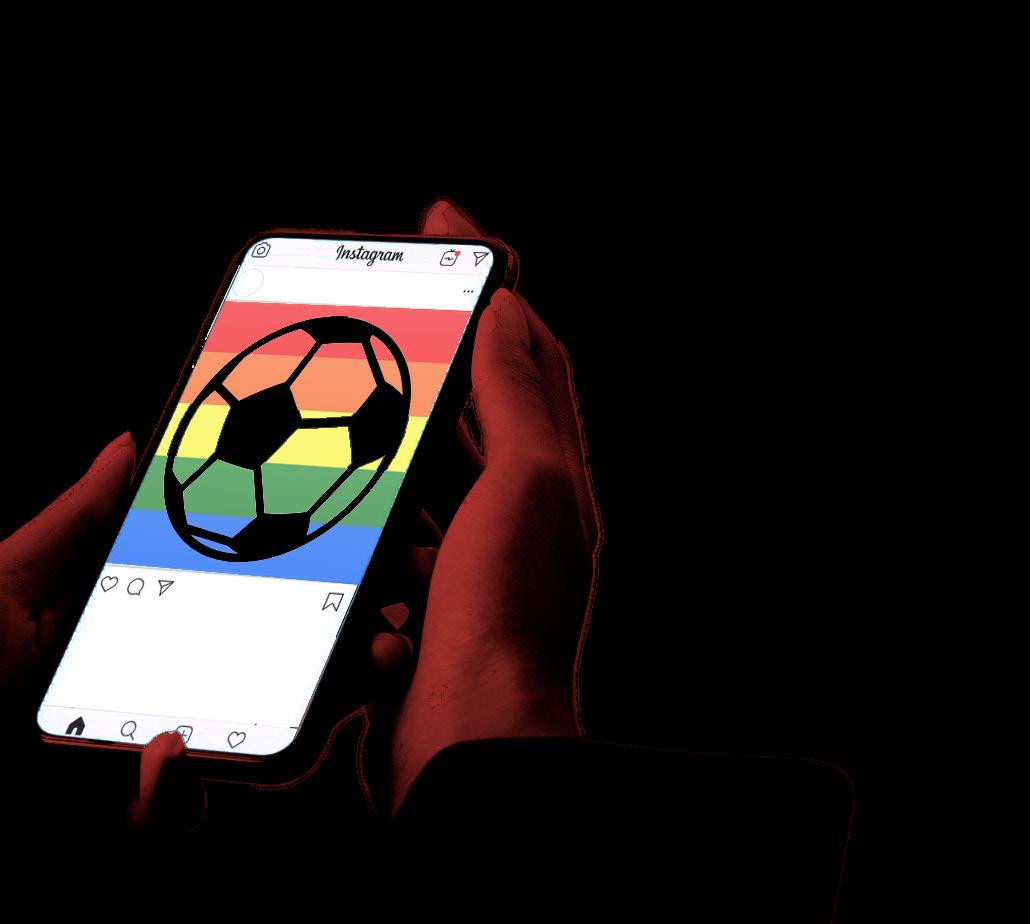
Every few months, I learn that another one of my former soccer teammates is Queer via Instagram. It’s usually not in a formal coming out post, which I think we left behind in the 2010s — more often, she/they simply posts a lady on Valentine’s Day or a selfie from the sidelines of a pride parade, a bi flag in stripes of glitter on her cheek.
I’ll send a screenshot to my best friend, one of the only out lesbians I ever encountered in a decade of youth soccer, like, “another one?!”
I don’t know why I’m surprised — it’s women’s soccer. From Bend It Like Beckham to Abby Wambach and her wife’s World Cup-winning kiss, the sport is famously gay as hell. ‘Playing for the other team’ (like, soccer team) is one of the most obvious ways to say dyke without saying it. But for years, I thought I was alone.
This seems like a huge oversight, considering that I grew up in Seattle, walking across rainbow-painted crosswalks from one oat milk-coded coffee shop to another one across the street. I feel extremely lucky to know that, for the most part, what actually mattered to my soccer community
was how many goals I scored, not my sexuality.
Still, a couple offhand homophobic comments from teammates over the years made me retreat from the moments of bonding that turn a team into a community. More pervasively, there were codes of locker room femininity I never quite grasped. What’s the point of putting on mascara or straightening your hair before a soccer game?
I didn’t have the typical gay experience in the high school locker room of noticing a friend’s sports bra and realizing — oh. By high school, I already knew I was Queer, and I assumed my shaggy short hair made it clear to everyone too.
So I was careful to look away while we were changing to avoid making anyone uncomfortable.
After showering, I snuck glances at the team captain doing her eyeliner in the mirror. She worked with a type of easy, precise femininity that terrified me, made me awkward in its presence. Sometimes our eyes would meet, and I would look away.
I looked down so resolutely that I never really looked at anyone at all.
While they were making assumptions about me, I was making assumptions about them too. I never considered that the captain or the goalie or apparently like half of the team were crushing and flirting and otherwise discovering themselves on a parallel track to mine.
Some of my glossy ponytailed teammates are now in toxic Queer polyamorous relationships at liberal arts schools. Some went on to join sororities. Some of them might even be in toxic Queer relationships in sororities
There’s no one way to be an athlete, and there’s no one way to be Queer.
Seeing a picture of somebody who was bitchy to me in high school posing with a flag sometimes gives me a knee-jerk sense of resentment. Mostly though, I feel chagrined that I couldn’t see beyond our differences at the time. I lost touch with most of those people and I regret the connections, or at least recognition, that could have been.
Still, I’m glad that we all seemingly ended up in a similar place: living more fully as ourselves, or at least hard-launching our girlfriends on Instagram.


TAKING A BREAK: THE ALLURE OF INTRAMURAL SPORTS
by CALEB PETERSON



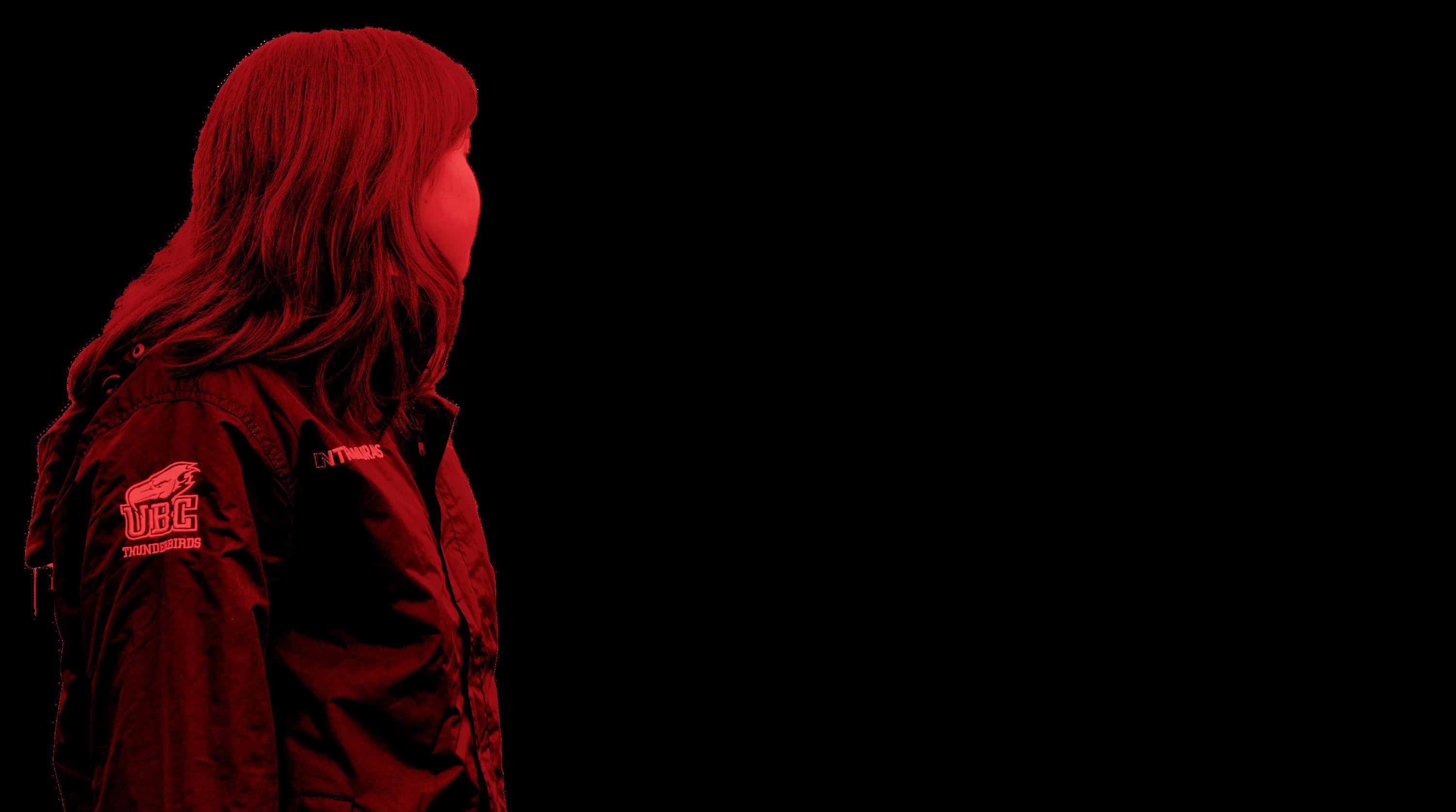
10 | FINDING YOUR TEAM | TUESDAY MARCH 19, 2024
‘An opportunity for me to say thank you’: UBC athlete organizes shoe drive for Ethiopian runners
by EBIN TOMY
Kiana Gibson, a second-year nutrition and dietetics master’s student, jokingly refers to her time training with a local Ethiopian running club as “running far behind them.”
Gibson, a runner on the UBC cross-country and track and field teams, spent her 2022 winter break in Addis Ababa, where her mother is working for the Canadian Embassy. When visiting, she wanted to continue training, so her mom helped arrange logistics of temporarily joining a local club. During her time there, she saw firsthand the lack of access to quality shoes the runners were faced with. Gibson recognized an opportunity to make a tangible difference when she went back in December 2023.
She decided to run a shoe drive for gently used athletic shoes.
“I don’t like when things go to waste,” she said. “I thought it would be a great opportunity to divert shoes that often just get piled up in people’s closet[s] and give them to people that maybe can’t afford their own shoes because running shoes can be pretty expensive.”
Gibson described this initiative as a team effort and said she’s “just the one who happens to have a mom who works in Ethiopia and lugged a bunch of suitcases around.” Athletes from the UBC cross-country and track and field teams donated their shoes and head coach Laurier Primeau covered luggage fees.
This grassroots initiative resulted in the collection of 85 pairs of running shoes, with at least 10 pairs of shoes donated by Vancouver-based brand Hettas.
Hettas is developing running shoes specifically designed for female runners’ anatomy and physiology. Founder, CEO and
UBC alum Lindsay Housman pointed out Gibson’s care in plan ning and executing this initiative.
“I loved that Kiana was very thoughtful about it,” she said. “I loved that this was a donation with a purpose going to a commu nity that could really use them … she did the groundwork to under stand that there was a need, they wanted help and that she could help.”
“It was really an opportunity for me to say thank you and to give back to the running community there in a very minuscule way,” said Gibson.
Transporting these shoes to Ethiopia presented logistical hurdles, from language barriers to airline baggage policies and the physical challenge of transporting so many shoes across continents.
Gibson delivered the shoes to the coach of the local Ethiopian club, who distributed the shoes. Every pair of shoes was claimed by a runner of the club. Asmerom, a member of the club and Gibson’s guide in Ethiopia, expressed the group’s gratitude.
“Some of the smaller sizes, people were bringing to their children, which was really cool.”
Gibson’s initiative shows sports’ ability to transcend borders. From the contribution of the UBC varsity teams to the donation from Hettas, this drive showcased the strength of the Vancouver running community.
“That’s something amazing about running,” Gibson said. “There’s an immediate connection when you know other people who run or you understand even though they might not have met anyone on this club in Ethiopia that there’s a mutual understanding of why we love this sport and shoes are a very small part of that.”














MARCH 19, 2024 TUESDAY | THE UBYSSEY’ S 2024 SPORTS SUPPLEMENT | 11
BETTER WORKING CONDITIONS FOR WORK LEARN RESEARCHERS. SIGN A UNION CARD TODAY. COURTESY KIANA GIBSON
‘Birds go global: The lack of professional athletics opportunities in North America
by FIONA ETHERIDGE


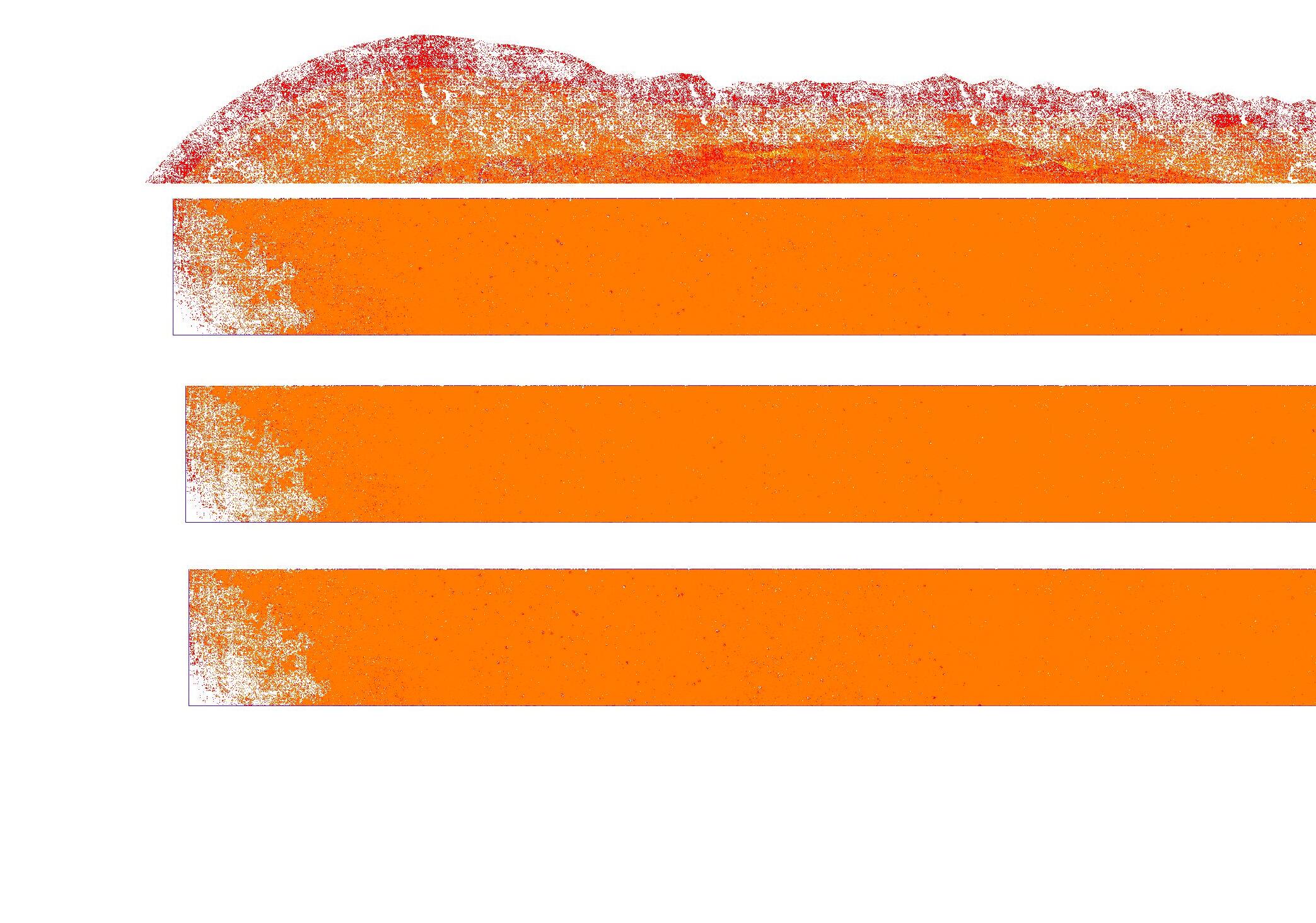
ISABELLA FALSETTI / THE UBYSSEY

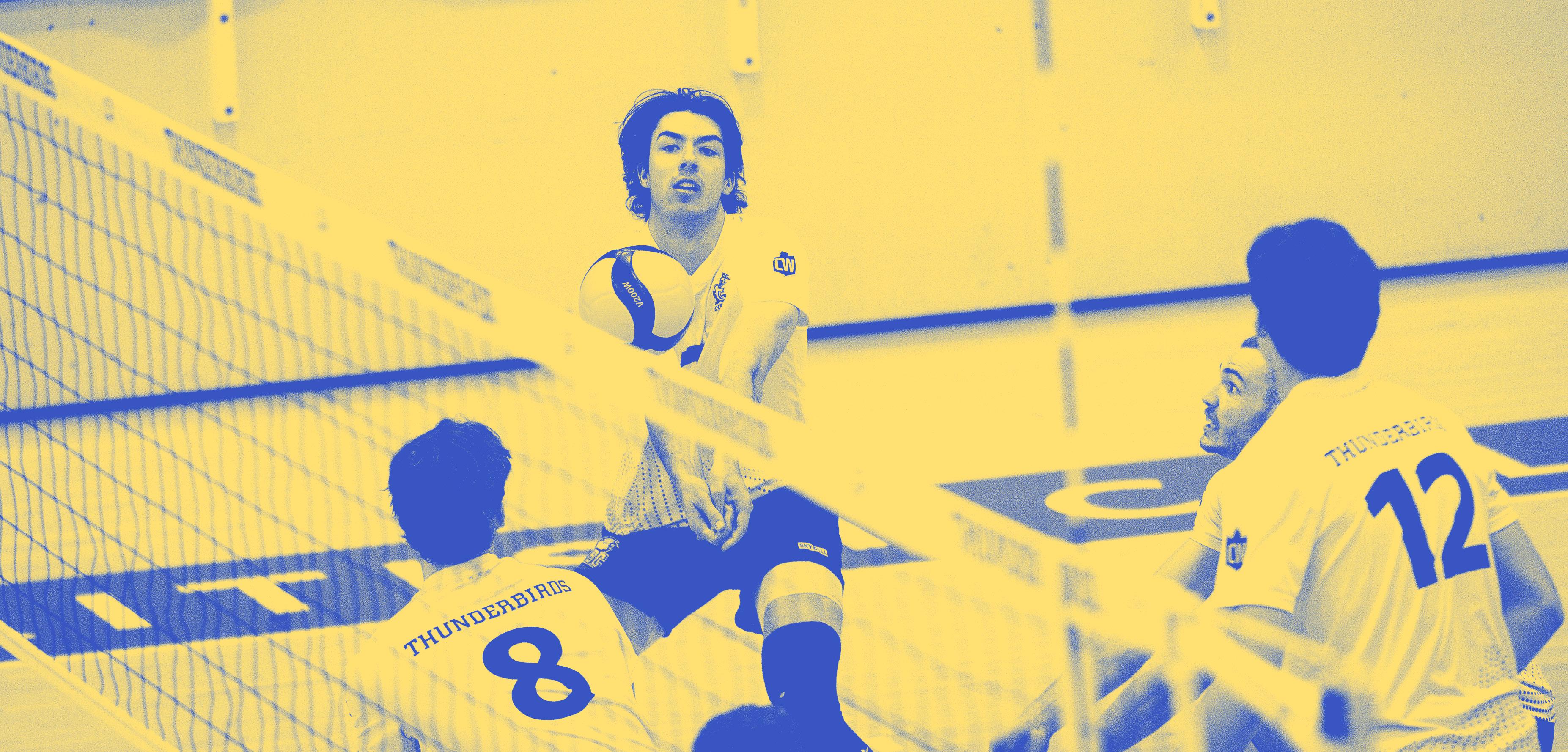
hear them loud and clear,” she said.
“I would say that there is showing up by the Swedish fans, but we definitely celebrate in a different way,” she said. “There’s no Crazy P at a game with his drums.”
Another difference Stuart had to adjust to was more technical — the ice rinks are larger in Sweden, so there’s more space in her net.
“You have to adjust so you have to overlap on your posts and play out aggressive,” Stuart said. “[That] was something I didn’t do at all prior to coming.”
Canada is only now starting to see more focus on women’s hockey, but Stuart said it’s “built into the culture” in
quite a lot of targeted support for women’s hockey,” she said. “[But] Sweden has this established understanding of it.”
Matthew Neaves
Matthew Neaves played as an opposite hitter on the UBC men’s volleyball team from 2018–23 and now plays for Unicaja Costa de Almería in Almería, Spain. Neaves also cited the lack of opportunities in North America as his motivation for choosing Spain.
“It’s really limited if you want to play volleyball professionally. You can either go overseas to play indoor, or go through the beach volleyball circuit,” he wrote in a statement to The Ubyssey
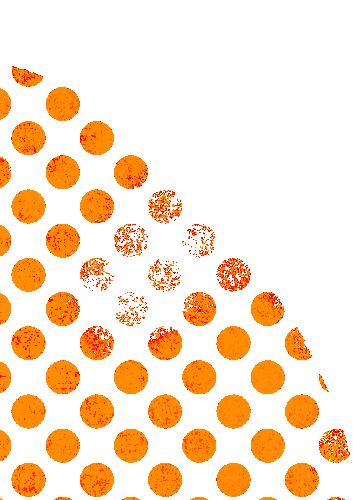
tinue to improve with the hope of representing Canada at an Olympic Games” going international was the only option.
Neaves, like Robertsen, used an agent, which he said was helpful since “they help negotiate your contract and reduce the chances of being taken advantage of.” For himself, an agent was crucial in the decision to sign with his team.
“My agent brought Almeria’s team to my attention as a way for me to challenge myself in a starting position, as well as having some comfort while doing so,” he wrote. “I live on the southern coast of Spain, I don’t think there are many places that I would rather live.”
According to Neaves, there hasn’t been a lot of culture shock.
“It was definitely [an] adjust-
ment with the language barrier, but my teammates can speak English which has helped a ton. The culture here is very easy to adapt to,” he wrote. “The most difficult one is eating dinner at 10 p.m.”
He also noted technical difficulties, like how the type of volleyball is slightly heavier and spins easier than what’s used in Canada. But he can’t complain. “I get to play the sport I love and I’m compensated for it.”
Despite the difficulties of finding a professional athletic career, all three athletes believe it’s worth a shot.
Robertsen’s advice to current or aspiring college athletes is keeping an open mind on the opportunities in Europe.
“It is very different over here. You can’t set your expectations
anywhere, you just kind of gotta go into it with an open mind and adapt as you go,” she said.
Stuart implores players to remember that “you’re not an island.”
“Don’t be afraid to reach out and inquire, ‘Hey how did you like that?’ ‘You met that coach one time at camp? What did you think of them?’” she said. “There are definitely connections that you can make to explore your options.”
“If you love volleyball you should pursue it,” Neaves wrote. “You can always work in Canada but how many people can say they’ve spent months or years working in Europe playing a professional sport?”
— Additional reporting from
 Lauren Kasowski
Lauren Kasowski

MARCH 19, 2024 TUESDAY | THE UBYSSEY’ S 2024 SPORTS SUPPLEMENT | 13
BOB FRID / UBC ATHLETICS
SIDNEY SHAW / THE UBYSSEY
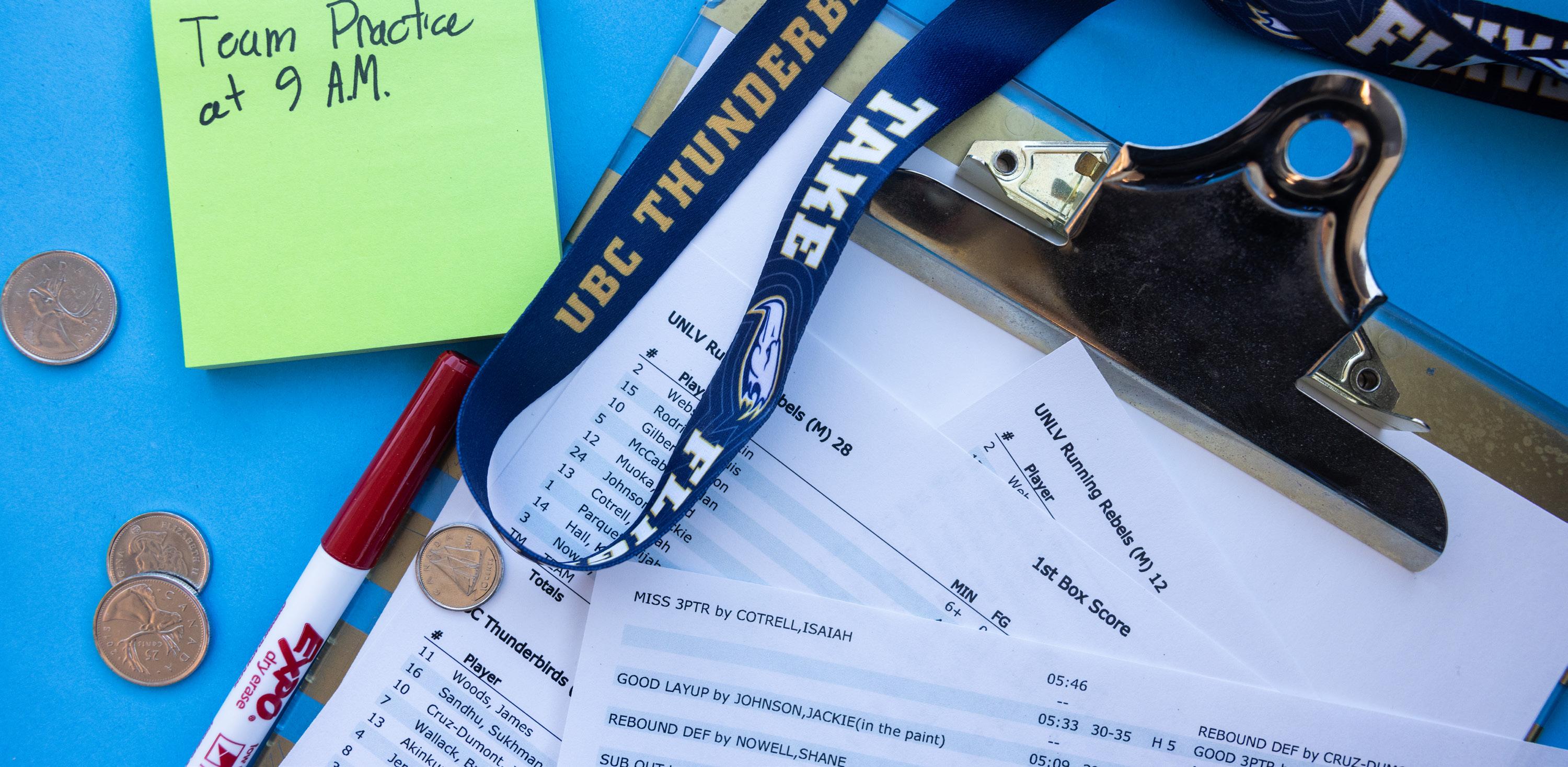
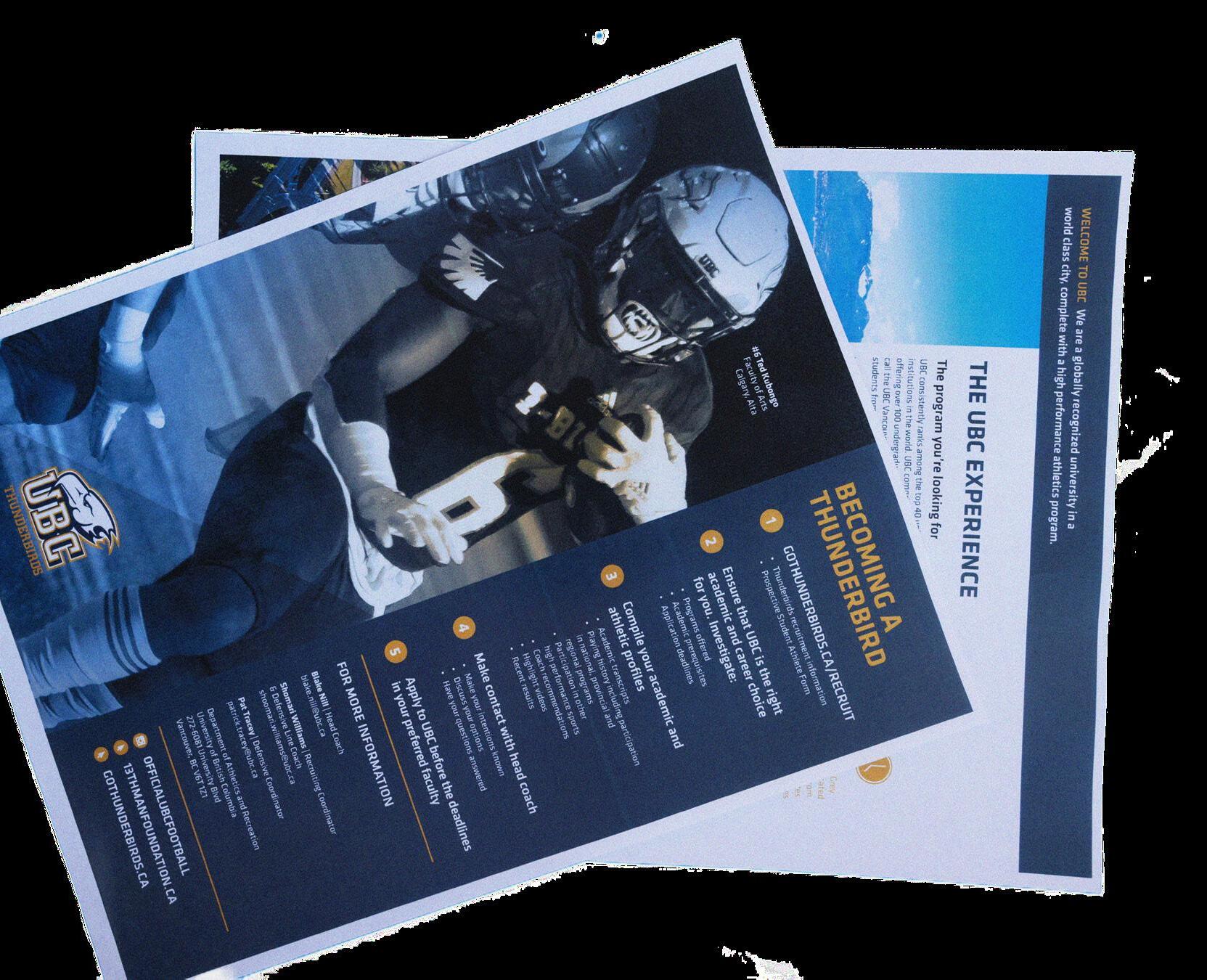

Last year, a Ubyssey breakdown of athletes’ hometowns revealed a noticeable preference for domestic and in-province student athletes on UBC’s varsity teams.
Ninety-three per cent of Thunderbird athletes are domestic students, with most coming from BC, Ontario or Alberta.
For softball head coach Jennifer McKellar, this reality may come down to how popular a sport is in BC and how attractive UBC is to potential athletes.
“When you have the local talent and they want to come and they’re good enough to come, you don’t really need to look beyond that,” she said.
At UBC, recruitment is facilitated in varying ways. Some varsity teams host open tryouts at the start of the season, but a lot of teams are built before the season, by asking pre-UBC students to
These recruitment avenues primarily fall on the shoulders of a single person. For most teams, the head coach does the vast majority of the scouting and decision-making. With a significant amount of work and limited resources, they must be strategic in how they expend effort.
Right skill, wrong place: How recruitment practices impact team demographics
by ANNALIESE GUMBOC
“Just like anything, you gotta prioritize where you spend your time,” said men’s soccer head coach Mike Mosher. “We have very few international students in our team, and it’s pretty clear why. I’m gonna prioritize what I know, and the players I know best.”
Both Mosher and McKellar said potential recruits are often identified in high school, either through them reaching out to a coach or a coach becoming aware of a player through their own social networks.
Overall, recruiters require familiarity to make confident roster decisions. Because of this, they have a preference for prospects they’ve met or watched in-person. McKellar noted her program tries to build early relationships with recruits so both parties know what they’re getting into.
According to Mosher, around 95 per cent of the prospects who receive offers from men’s soccer have been seen in-person.
Out-of-province athletes are scouted at camps or tournaments that UBC recruiters visit, but the resources to travel to these events are finite. Certain sports, like soccer, invite out-of-province prospects to UBC for camps to avoid flying across the country.
However, the football program is unique.
Shomari Williams is the only designated recruiting coordinator on a Thunderbird varsity team. While football head coach Blake Nill makes the final decisions on the roster, Williams is responsible for scouting players and bringing prospects to Nill’s attention.
“My primary job is to identify guys,” said Williams. “I’m always on the lookout for talent, watching film, travelling somewhere to see somebody and I’m the main guy who does that for the team.”
But even with a larger budget, Williams still prioritizes, to an extent, the players, clubs and locations he knows and is familiar with.
“I’m from Brampton, Ontario myself, so I love players from Brampton,” said Williams. “I have a good connection with players from Brampton or can understand some of the players a little bit better.”
Regardless of a team’s methods, one trend persists across all varsity teams: international students are underrepresented.
At UBC Vancouver, international students comprised 28.6 per cent of the student body but only 7 per cent of the varsity athlete population for the 2022/23
season.
But the lack of international athletes is not a reflection of a lack of interest.
“I probably get seven or eight emails a day that are just internationals looking,” said Mosher. “We’ve run some open tryouts of late where there’s been like 70 players coming out on the field. It’s almost unmanageable,” said Mosher. “Most of them were international students.”
Despite this, only three men’s soccer players are international.
McKellar noted softball does try to recruit internationally, but are not very successful.
“There are also a few less barriers to recruiting locally than internationally,” she said. “The cost for international [tuition] is extremely high, which is even more challenging than [for] our local athletes. Also thinking about housing, and support systems for those recruits.”
Ultimately, making a UBC varsity roster isn’t always just about skill — it’s also about being in the right place and the right social networks.

— Additional reporting from Lauren
Kasowski
14 | FINDING YOUR TEAM | TUESDAY MARCH 19, 2024


WHL scholarship sets players up for ‘success in life, not just hockey’
by OLIVIA DEFEHR
Pursuing professional sports and earning a degree are often at odds with each other — both demand incredible amounts of time, dedication and energy.
While reaching the world’s top league is a dream for many players, the odds are slim, which leaves most looking for an alternative path. One of Canada’s premier major junior ice hockey leagues is looking to prepare its players for futures beyond the rink.
In 1993, the Western Hockey League (WHL) established a scholarship program which grants players one year of post-secondary fees (tuition, compulsory fees and required books) for every season played in the WHL. According to WHL Chief Operating Officer Greg
Gardner, it was intended as a move to compete with the NCAA’s scholarship model in the US, and the scholarship ensures players of Canadian teams see success on and off the ice.
“We are a stepping stone to the NHL, but I think we’re probably more proud of those players that go on and access those scholarships and really have success in life,” said Gardner.
As of the 2023/24 season, approximately 8,000 scholarships have been provided, amounting to over $35 million. This season, 364 players have accessed the scholarship.
Two such players are UBC men’s hockey stars Samuel Huo and Ty Thorpe. Huo, a second-year forward, played in the WHL from 2017–22 and has had a
pivotal role in the T-Birds’ playoff run this season. Meanwhile, first-year forward and former Vancouver Giants captain Thorpe has already made a splash with 20 points over 28 regular season games.
“I think it’s a good bridge between junior and pro,” said Thorpe. “It’s a great opportunity for players coming out of the WHL to be able to take another step forward in their hockey career … there’s no stress about what you’re doing afterwards because you have that security of having a degree.”
For Gardner, the scholarship program’s flexibility is one of its biggest benefits. WHL alums don’t have to continue playing hockey in university to receive the scholarship. This allows players to truly

carve out the future they want without financial worry.
Some players choose to pursue their degree while developing their game at the collegiate level, moving on to professional leagues following graduation, while others choose to step away from hockey and pursue another career following graduation.
“Guys on our team are doing internships in the summer, exploring different career opportunities,” said Huo on how he’s seen his teammates benefit.
“It’s thanks to the WHL scholarship — being able to utilize it and go to school, and then pursue a career they want outside of hockey.”
Gardner, a WHL alum and former scholarship recipient himself, has noticed a growing need and
interest in the program.
“Looking as early as the 2000s, around 15 per cent of players were accessing the scholarships once they graduate from [the] Western Hockey League,” he said. “Today we’re closer to 70 per cent.”
“I think the most rewarding thing that we see is we’re really setting these players up for success in life, not just only in hockey,” said Gardner.
While hockey may not last forever, players in the WHL can rest assured knowing that the game they love will support them no matter what their future holds.
“Life goes by quickly, and hockey inevitably ends,” said Thorpe — a sentiment shared by all three men.

MARCH 19, 2024 TUESDAY | THE UBYSSEY’ S 2024 SPORTS SUPPLEMENT | 15
Mental pain behind gains: Gymtimidation is real
by REGINA HIPOLITO
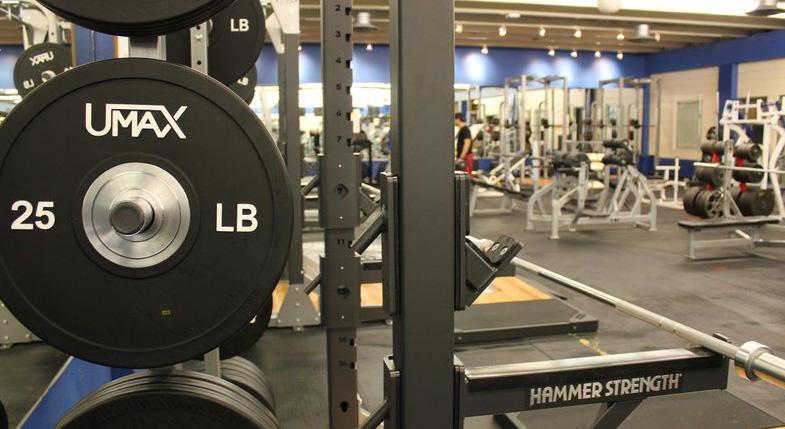
Imagine you’re standing in the middle of a gym. You don’t know where to go, so you hop on the nearest machine. Immediately, the thoughts start: Am I doing this right? Is my technique good? Is it heavy enough?
What if I fail this rep? How do I bail?
Oh gosh, are those people looking at me?
Gymtimidation, or gym anxiety, is a phenomenon that plagues many, and it’s no wonder why people are afraid to start. Setting foot into an unfamiliar environment with unfamiliar equipment can trouble even the most frequent gym-goer.
Third-year history student Savindya Mudadeniya did not believe in the phenomenon at first, saying that she thought she was just being shy. She said she used to always stick to the treadmills, and needed someone with her when she moved into the weights section.
“Even though I’ve been working out well beyond one and a half years, I still feel a little bit of intimidation,” she said. “I feel like I don’t blend in with the people who are frequent users, even though I am a frequent user.”
Similarly, fifth-year cognitive systems student Sharon Ho is all too familiar with gym anxiety. She decided to start going to the gym just after the pandemic, but became intimidated learning “to put together some kind of workout routine.”
“You have goals that you can set, but you also need to figure out and learn how to put together a plan that can bring you there,” she said.
“You still have to figure out how to use the machines properly, how to do the exercise correctly, even [the] tiniest things of keeping your back straight, having the right angles of your arms.”
One of the bigger drawbacks to going to the gym is the culture and


When Amreen Aulakh started working as a personal trainer on campus, she began to notice the limited availability of cost-friendly fitness resources for women.
UBC’s gyms to guide members through the routines that work best for them.
the learning curve that newcomers associate with the space.
Jasmin Ma, kinesiology assistant professor of teaching, said this experience with gym language tends to be a barrier for people who want to start going to the gym, especially when using weights.
“When you hear things like sets, repetitions, tempos — there’s this exercise language, where you don’t actually have a uniform language to name all of the exercises,” she said.
“You might hear one person call an exercise something and another person call it something completely different but mean the same thing.”
Ma said that people tend to overcomplicate working out, especially strength training, but said that if the goal is overall maintaining or improving general strength, there is a lot of flexibility in prescribing exercises.
“For example, you’re in exams and you’re really tired, maybe today’s not the day where we’re working with really heavy weights. We’re looking for something [with] higher repetition ranges and something a little lighter with, say, bodyweight.”
Mudadeniya said she never had an “a-ha” moment in realizing the gym wasn’t intimidating. In her own experiences, her goals and confidence levels contributed to her slow and gradual process of becoming comfortable in the gym.
“You just sort of get numb to these things. You get used to the gym and you start to focus on your workouts and your physical experiences with them, you stop paying attention to other people,” said Mudadeniya. Thinking about other people doing the same thing helped her.
According to Ma, the first step to overcoming gymtimidation is to start working out. She said
that even she feels intimidated starting in a new gym, despite teaching exercise and strength training.
Ma said online, pre-programmed workouts can be good places for people feeling nervous to begin.
“People can start from the comfort of their home … sometimes those classes or online exercises can be a nice starting place just to give you that time to learn the technique in a safe space,” she said.
She also pointed toward group classes for those who want a little more accountability and the social aspect of working out.
“There’s something that keeps it sort of light if you go with a friend. If you’re messing things up and you haven’t got the technique down, you can laugh together.”
Both Ho and Mudadeniya said that having people around them helped ease their anxieties. Ho enrolled in a fitness program with a personal trainer to get her journey started, while Mudadeniya started going with her friends before being fully comfortable with her own routine.
Ho says that her anxiety “is never gonna go away,” but that knowing that everyone around is most likely feeling the same way, and are also learning to deal with it, eliminates the anxiety.
“[The gym] is not that serious, to be honest,” said Ho. “There are definitely some hardcore gym girlies out there, but you don’t have to be them. You could also just come for vibes. Get a good workout. I think that really helps.”

The third-year biology student was then inspired to start a community aimed at giving women more access to personalized gym resources. Aulakh, alongside her good friend Hamrah Riyaz, formed Her Fitness to do just that: empowering women interested in fitness by offering a multi-faceted approach to working out.
“We grew so organically,” Aulakh said. At their Clubs Day debut, Aulakh noticed that what drew so many women to the initiative was the club’s “low cost or free of cost” philosophy.
In a city where monthly gym memberships can range from $40–130, Her Fitness’s $3 membership fee was welcomed.
But Aulakh wanted to target more than just the expense of accessing a gym. She was looking to transcend that intimidation that comes with working out in the gym for some women that keeps them from exercising in these spaces in the first place.
“Intimidation begins when you bring fitness into the gym
“Having somebody there that already has a better idea of what they’re doing is really helpful in breaking down those barriers to entering the gym.”
Ensuring that every event is beginner-friendly has been Aulakh’s primary approach to promoting accessibility. She said that every session is beginner-friendly, from weightlifting sessions to yoga.
Through this year’s events, Her Fitness has already progressed through the motions of helping members create a fitness program and achieve personal goals. But they’re also addressing an often overlooked aspect of a journey to a healthy body: reflecting on how far you have come.
“We’re our own biggest critic, and sometimes when you achieve a goal, a lot of times we’re like, ‘now I’m not satisfied and I have a bigger goal,’” said Aulakh. “Sometimes doing that reflection … really helps ground you and even gives you that extra boost of motivation to now keep going.”
Aulakh added that this mindful and cyclical approach encourages confidence for any woman feeling intimidated or


16 | FINDING YOUR TEAM | TUESDAY MARCH 19, 2024
HER FITNESS IS BREAKING DOWN GYM BARRIERS by FIONA SJAUS
COURTESY HER FITNESS
COURTESY UBC ATHLETICS & RECREATION







Boy’s club
by LAUREN KASOWSKI
I was nine years old when I quit playing baseball.

into this “boy’s club.”
golf.

I didn’t want to, but I was tired of my teammates pulling my braids and teasing me about which one of them I had a crush on (spoiler alert: no one). I felt like I had to work extra hard, just to be seen as a teammate — “one of the boys” — instead of just a girl.
This started the long internalization that if I was going to succeed in sports, in any capacity, I would have to give up some, or all, of my femininity in order to be taken seriously. I learned to mould myself to fit

But it didn’t matter how hard I played in gym class, how tomboy-ish I dressed or how much I knew about a sport — everyone seemed to see my gender before they saw anything else. Someone heard I was a fan of the Toronto Raptors? Name five players. I was called a “puck bunny” for wearing my brother’s hockey jersey for a school spirit day.
As I grew up, this misogyny stayed constant. It just changed shapes. NFL fans reduce my interest to liking Taylor Swift, and I see the side-eye before the huffed answer when I ask about a rule in
In February, I went to a journalism conference and asked a male sports journalist if the sports scene was changing to include more women.
“Absolutely,” he said.
Days later, I was at my first professional sports event as a journalist and was the only woman in the room. The other women there were social media coordinators — which makes sense since most women in sport I know do social media since higher-ups see that as a “girl job.” And somehow journalism or communications isn’t.
When I walk into a sports envi-
ronment, whether as an athlete or as a journalist, I am tired. Tired of being in a constant state of questioning how much I’ll have to prove myself before they start treating me as an equal. Tired of wondering if I’ll have to ask the right question, wear the right stuff, make the right play and then I will be accepted as someone qualified? Tired of wondering if it wouldn’t be so hard if I was a man.
You might think I’m exaggerating. I’m not. I wish I was.
Some things are getting better — professional women’s leagues are at an all-time high and the

men I play flag football with have relatively no problem that I play with them, even though I’m usually one of two girls on the field.
But I can’t say that sports won’t always be a “boy’s club” because ultimately it’s not up to me. It’s up to the men in the sports spaces. They are the ones who decide who’s let into their club.
So, men, I ask you to include women. Hire women. Pay women. Pay women equally. Support women. Believe women. It’s time to step up to the plate.

MARCH 19, 2024 TUESDAY | THE UBYSSEY’ S 2024 SPORTS SUPPLEMENT | 17

COURTESY
MAZES FROM THE SPORTS DESK



CROSSWORD SOLUTION
JANUARY 30, 2024
VOLUME CV | ISSUE XII

1. Pop singer Del Rey
5. Deity
8. *Relax
12. Hasn’t ___ in the world
14. Other, in Oviedo
16. Fizzy drink
17. Heir
18. *“To pass on” even more euphemistically
20. *Biker’s accessory
21. Charcuterie
22. Movie at Sundance
24. Go-to spin guy
29. Greek goddess of the dawn
30.Donut shop with loca -
1. Famous movie dog
2. Bank ID
3. River nymphs
4. Rice_-___, American based food brand
5. Campaign whose first ad was directed by Michael Bay
6. Shakespearean protagonist, or board game
7. Wish for
8. Secretly include on an email
9. Perfectly fine
10. Guardians on the score board
11. Kit ___ bar
13. Regional
15. NYC dance troupe
19. Letters that deliver
tions in Chinatown and on Arbutus
31. Words before evil
32. To start a football game, or a hint to the starred clues
34. *Mid-air skateboard trick
35. Small amount
38. “Terrible Twos” predecessor
40. Hitting your opponent with both feet in Wrestling
41. *Online crowdfunding platform
45. Ordering aids
47. As red as ___
48. Rev.’s message
23. Favoured projectile of captive monkeys
25. Allude (to)
26. Dramatic opening
27. Have ___ (know somebody)
28. Horror flick featuring horses
32. Shot
33. Mythical trio
35. USN brass
36. Rope swing support
37. Quebec-based hardware store
39. Obtain assistance
42. Indenting in Word
43. Condense
44. AP alternative
46. Trendy NYC and London



51. Defunct Cold War gp.
52. Forrest blaze
54. *Hard to quit routine
56. Toronto Richmond Centre counterpart
57. Rust, molecularly
61. Fatty acid, for example
62. Position in an argument
63. Part of STEM: Abbr.
64. * Alternative to a drop
65. Some prosecutors, for short
66. Whirlpool alternatives
67. Polaris or the Sun, for example
neighborhood
48.Command to a dog with a human name
49. Beethoven’s Symphony No. 3
50. Deliver, as a verdict
53. Gets an F
55. Eliminate
57. “Patience ___ virtue”
58. Exorcise
59. Ghost psychic ___ Mae Brown
60. Duck Hunt came with it

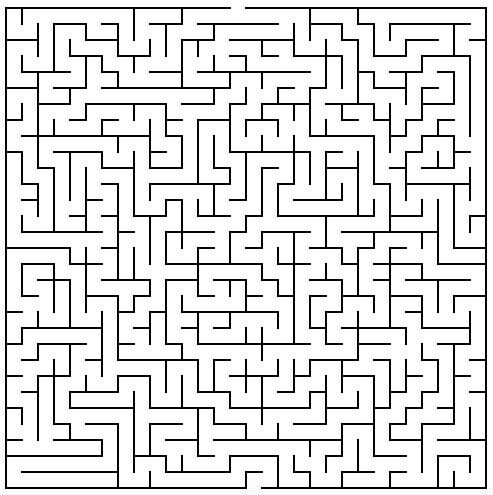

THROUGH THE VIEWFINDER

18 | GAMES | TUESDAY MARCH 19, 2024
ACROSS
CROSSWORD PUZZLE
DOWN
BESTCROSSWORDS.COM
ISA S. YOU / THE UBYSSEY
MAZEGENERATOR.NET
COURTESY


PLACE VANIER HAS DIED — SOON TO BE BURIED
Campus Vision 2050 will demolish parts of Place Vanier to build new residences. What does this mean for the future of Vanier and the students who’ve lived there?
Words by Caleb Peterson Design by Anya A Ameen
Place Vanier was already a joke before I even lived there.
I can still see the look on my manager’s face as I told her where I had been assigned to live for my first year at UBC.
As soon as I said Vanier, a look of pity washed over her.
My manager, a UBC student, knew the residence as old and decrepit, a place no one would actively choose to live in.
Even as I moved in and braved the endlessly awkward icebreakers of Jump Start, my living situation — a Vanier basement suite — remained a joke. I constantly mentioned the bars over my window, the complete lack of sunlight and the weird brown stains that dotted my walls. I would laugh
along with everyone, but on the inside, I wondered — Was this room really the place I was going to spend my first year?
Oh well. I guess someone’s got to get the short end of the stick.
Until 1944, there was no student housing at UBC. But as the student body boomed after the Second World War, it became clear that UBC needed to start providing housing options for students — and fast.
With that, Fort Camp and Acadia Camp were born. Or, more accurately, bought.
The “Camp” in Fort and Acadia Camp was not arbitrary — these sites were buildings owned by the Department of National Defence. Some were bought by UBC for $1 (rough -
ly $18 today) and others were turned over to or rented by the university by the Department of National Defense.
In the 1960s, The Ubyssey described the residences as “squalid.”
Once in 1964, the heating broke in a Fort Camp men’s residence for four winter weeks.
So the men inhabited a nearby women’s residence “and threatened to stay there” until their heating was fixed. After being kicked out, the men protested on campus, carrying signs that said, “We Are Not Polar Bears.”
These residence buildings temporarily solved the increasing demand for UBC student housing — but they were nothing more than a band-aid on the wound of the university’s growing population. Enrolment
increased 45 per cent from the 1944/45 to the 1945/46 academic year, the first school year after the end of the Second World War.
The poor quality of the residences also hindered student safety.
A 1954 Ubyssey article titled Fort Camp Huts Disgrace to UBC quoted then-Fire Chief R.S. McPherson saying “Fort Camp would burn to the ground in ten minutes if a fire went unchecked.”
As if living in constant fear of burning to death in a fire wasn’t enough, a 1961 student handbook painted a clear picture of the residence’s dilapidated state.
“A pioneering spirit is needed,” read the handbook. “No where else can you have your own private shower, rain
through a hole in the roof.”
Eventually, Fort and Acadia Camp were set to be demolished. Tucked away on the fourth page of the January 14, 1969 edition of The Ubyssey, a short 250-word piece announced its demise: Acadia Camp has died—soon to be buried .
Now, Fort Camp’s remains are where the Museum of Anthropology is, a calm spot overlooking the Pacific Ocean. The site of Acadia Camp is now home to Acadia Park family housing.
In the late 1950s, it was clear that UBC’s decision to cheap out on residence costs was coming back to bite them in a big way. The university needed a better, more permanent solution.
FEATURES MARCH 19, 2024 TUESDAY 19 EDITOR IMAN JANMOHAMED
And, by October 30, 1959, it found one, with the opening of UBC’s first-ever permanent housing complex: Place Vanier.
In December 2023, UBC passed Campus Vision 2050.
Campus Vision 2050 details how UBC Vancouver’s physical campus will change and grow over the next 30 years. The plan includes commitments to establish a SkyTrain extension and revitalize UBC’s green spaces, but student advocates — like AMS executives — argue the most important goal is the expansion of student housing.
“UBC Vancouver is located in one of the world’s least affordable regions,” reads the Campus Vision 2050 plan. “The rising cost of living in Metro Vancouver, and of housing in particular, threatens UBC’s ability to recruit and retain faculty and staff and is making a UBC education less accessible.”
The plan commits to building 3,300 more student housing beds in addition to 1,000 beds to replace aging facilities. This will bring the total number of student beds on campus to 17,300.
One part of that planned expansion is an overhaul of Place Vanier.
Vanier’s reputation as a set of run-down buildings that I learned about as a naïve first year wasn’t unfounded — according to Campus Vision 2050, the residence building has “seismic deficiencies.”
From the asbestos warnings that adorned my door to the gaping hole inside of my closet — I experienced the downsides of living in a 65-year-old building firsthand.
Second-year UBC student Sarah Dryden expressed similar concerns about the quality of Vanier’s accommodations.
“I think Vanier’s buildings are outdated,” said Dryden. “The bathrooms tend to get moldy … There’s sometimes silverfish and other bugs that sneak into the rooms.”
According to Campus Vision 2050, the Place Vanier expansion will increase student housing capacity and “create a more active and vibrant pedestrian environment through building design and ground-floor programming.”
All of the Place Vanier buildings except the newer Tec de Monterrey and Korea-UBC houses will be demolished and replaced with newer residences.
Andrew Parr, the associate vice-president of student housing and community services at UBC, outlined the weight of UBC’s housing problem.
munity, [like] faculty, staff and commuter students to appreciate and enjoy as well,” said Parr.
Parr noted the redevelopment of Vanier won’t lead to temporary dips in student housing capacity.
“We wouldn’t demolish everything at once,” he said. “We demo certain components, build back … and then move to the next phase, have students live there, move to the next phase and never be a net loss of beds
While the plans to demolish Vanier were announced in December 2023, it seems to not be common knowledge. The students I interviewed for this article didn’t know about the demolition.
Even as I learned of it, it felt like a footnote. I found out about the demolition in the middle of a 20-slide Instagram story about Campus Vision 2050. It wasn’t a headline — I would have missed it if I had zoned out and mindlessly clicked through one more story.
Tucked away on the fourth page of the January 14, 1969 edition of TheUbyssey , a SHORT 250-word piece announced its demise: AcadiaCamphasdied—soon tobeburied.
throughout this process.”
“Our waitlists are massive,” said Parr. “There’s literally thousands of students who would like to live on campus who we cannot accommodate because we don’t have space.”
Parr also said the Place Vanier expansion could reinvigorate the campus community.
“The more students that live on campus, the more vibrant the community can be … the more other amenities that can be available for the entire com -
According to Parr, it may not even be that long before buildings start falling. He said the Place Vanier expansion could begin as soon as 2028.
After replacing Fort and Acadia Camp, Vanier is now dying alongside them — for good reason. Its earthquake risk and low-density sprawl don’t fit in a modern UBC.
Still, there is a tinge of sadness in knowing that Vanier’s days are numbered.
To me, it seems that Place Vanier is already being erased and that history is repeating itself.
In Acadia Camp has died— soon to be buried , the author said the residence was known for its “spirit.”

“The theory was that you had to have some kind of spirit to put up with the inferior living conditions.”
That spirit is what is often forgotten when we talk about these buildings.
Place Vanier may be brick, concrete and drywall, but it’s also so much more. Thousands and thousands of students have passed through its walls. And while Vanier’s reputation poorly precedes itself, the ability to laugh and joke about this shared experience with others is priceless.
Even if students don’t yet know of Vanier’s fate, it is not a place that will quickly fade
out of view. It will be missed by many, including myself and second-year student Ava Webb.
For Webb, hearing about the destruction of a place they once called home was heartbreaking.
“It makes me sick, honestly. It was my home and leaving was so hard,” said Webb.
“Place Vanier was my last choice when I was ranking residences — it’s quaint and isn’t known for much — but leaving was one of the hardest things I’ve had to do,” said Webb. “I miss it every day.”
While I may have greeted the doors to Place Vanier with trepidation, I left them wishing I could have just one more day. My first year was disorienting, stressful, exhilarating and thrilling. Vanier was there for all of it.
Vanier may have been a joke, but it was our joke.
The houses will eventually fall, 65 years of history into the dirt. But even as the last brick hits the ground, these buildings will live on in the people who once called them home — in the memories of countless first days nervously walking up to the Commonsblock, ready to live away from home for the first time. It’ll stay alive in countless late nights spent with friends who would become lifelong connections.

The residence demolition can make Place Vanier seem dead. But as long as there are people alive who experienced it — like you and I — stories can still be told about those old, asbestos-filled beloved buildings.
Place Vanier will never be truly buried. U
20 | FEATURES | TUESDAY MARCH 19, 2024
IMAGE CREDITS University of British Columbia Archives [UBC 1.1/14220-2] University of British Columbia Archives [UBC 1.1/14220-1]
Opinion: Omnibus referenda restrict student choice
Marie Erikson Staff Writer
Marie Erikson (she/her) is a thirdyear student in the philosophy honours program and a Staff Writer at The Ubyssey.
In a representative democracy, it is often impossible to vote in a way that entirely matches our views. Be it federal or AMS elections, voting for a candidate often means accepting that some of their positions contradict our own.
Candidates are people, each with a myriad of opinions, and we cannot expect one person out of a few to have an identical worldview.
Many of us, however, still vote on the grounds that voting for the best imperfect candidate is better than staying silent.
Enter referenda: a chance to provide a clear answer to a specific issue. Unlike voting for representatives, referenda allow us to be precise in our voting, ideally leading to a decision that more accurately reflects the voices of the people.
But one proposed AMS referendum this year nearly stole our voices.
Referendum question 2, drafted by anonymous organizers and promoted by multiple groups including the UBC Social Justice Centre, among other groups. It would have affected AMS investments and Food Bank access and called for UBC to take a particular stance on the IsraelHamas war. Demands to support Palestine would also have been sent to UBC from its student body.
AMS Council rejected the referendum during its February 28 meeting for failing to comply with the society’s bylaws regarding referenda clarity.
Of course, there is nothing wrong with the student body proposing and voting on topics relevant to UBC and the AMS. In my view, the problem lies in this referendum unnecessarily forcing students into an all-or-nothing position.
A student, for example, may want the AMS to separate from RBC but keep their food bank’s focus on students, or vice versa. Either combination of views makes sense considering that expanding
BOARD? I’M INVIGORATED //
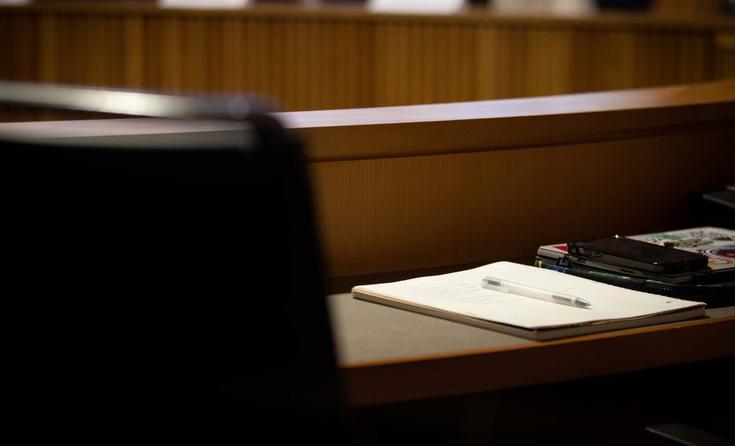
food bank access would require more financial investment into the program, an additional difficult process was the AMS to reject a major sponsorship while running a deficit. The referendum, however, would have driven that student to abandon one of their goals for the AMS or accept contradictory courses of action.
Students would have been forced to choose between their views on RBC, the AMS Food Bank and Palestine; the referendum’s actions regarding Palestine were too broad to expect an individual to come close to fully agreeing or disagreeing. It is possible to want Jewish students to have a dedicated space on campus through Hillel BC while opposing the Israeli military’s actions. It is further possible to hold these views and want UBC to provide resources for affected groups while disliking how the referendum requires a boycott of unspecified organizations.
Ubyssey Board of Directors elections results
Jalen Bachra
President of the Ubyssey Publications Society Board of Directors
As we wrap-up the 2024 AMS Elections season, I am proud to announce that the following students have been elected as your next Community Representatives on The Ubyssey Publications Society’s Board of Directors:
• Ian Caguiat
• Julia Do
• Ethan Lui
• Emma Martin-Rousselle
• Ferdinand Rother
• They will join next year’s coordinating editor, staff representatives and alumni representative to make up the nine seats on the board.
As myself, and the rest of the current board of directors wrap up our terms, I look forward to passing the torch onto them and seeing what next year’s board can accomplish. U
The UPS Board of Directors have no authority over editorial decisions at the publication.
It’s also possible to support protecting free speech but disagree that UBC should promote a particular view on the war. Even if provisions regarding RBC and the AMS Food Bank were excluded from this referendum, students on the spectrum between extreme Israeli or Palestinian support wouldn’t have been accurately represented by their votes.
None of this is to say that past referenda were perfect examples of breadth versus specificity. AMS bylaw changes have been decided through one referendum in the past two years, and a 2022 fee reduction referendum also included a change to require that all opt-outs be digital. Conversely, AMS Council was rightfully criticized for separating gender-affirming care from its referendum on health insurance fee changes. However, the previous bylaw change referenda items did not egregiously combine distinct and controversial issues into a yes or no question.
Our broader society has enough instances of harshly pushing people onto one ideological side or another. Even if the AMS Council rejected this referendum for separate reasons, we should be grateful that we are not unnecessarily compelled to abandon our values.
While some may suggest that we add a bylaw restricting such referenda, I doubt that it would be possible to capture the nuance of the problem. Referenda with a few bylaw amendments tend to be widely supported, and it would be easier to encourage already hesitant students to vote on a smaller set of options. Thus, restricting referenda to a single item would unnecessarily make the process less efficient.
It is then on us as students and AMS members to oppose omnibus referenda and support the union’s democratic process. The best way is to only propose clear referenda on distinct issues. When these
anti-democratic proposals come forward again, we should not sign petitions or vote for such referenda, no matter how much we support their ideas. Better still, we should propose separate referenda for issues raised in omnibus proposals.
Individuals shouldn’t have to think about enforcing the rules of democracy in student elections. But, like with government elections, only supporting respectful and democratic initiatives will demxxxonstrate that rule-breakers can’t succeed in our system. U
This is an opinion article. It reflects only the author’s views and does not reflect the views of The Ubyssey as a whole. Have something to say about what you just read? Contribute to the conversation and send a letter to the editor in response or your own submission at ubyssey.ca/pages/ submit-an-opinion.
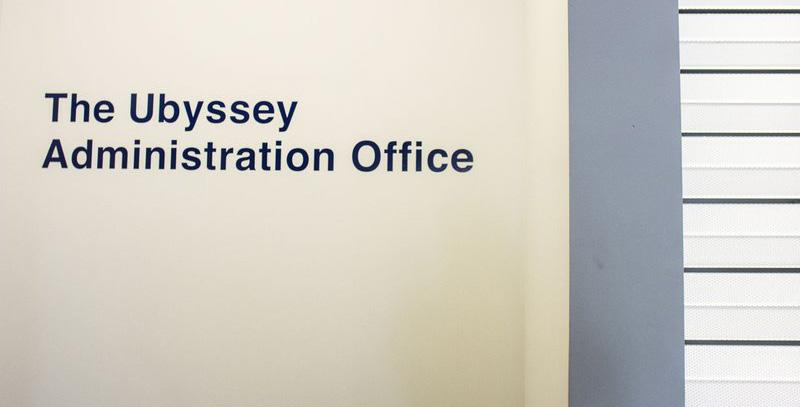
EDITOR SPENCER IZEN OPINION MARCH 19, 2024 TUESDAY 21 AMS ELECTIONS //
“Unlike voting for representatives, referenda allow us to be precise in our voting, ideally leading to a decision that more accurately reflects the voices of the people. But one proposed AMS referendum this year nearly stole our clear voices,” writes Marie Erikson.
Ian Caguiat, Julia Do, Ethan Lui, Emma Martin-Rousselle and Ferdinand Rother have been elected.
CHERIHAN HASSUN / THE UBYSSEY
ISABELLA FALSETTI / THE UBYSSEY
Umbrella buying guide
Sidney Shaw Senior Staff Writer
There’s a traditional poem my mother used to read to me. One that — as every great poem should — brought me joy in the moment and wisdom for the future.
大头大头 下雨不愁
你有雨伞
我有大头
Big head, big head
When it rains, I’m not scared
You have an umbrella
But I have a big head
And it was true. I never needed an umbrella back in my tiny village of Toronto, Ontario. My big head was sufficient to cover me from snow, hail and all sorts of precipitation.
Then I moved to Vancouver, and I realized that my big head was indeed very, very small. “UBC a place of mind” my ass.
Cut to two weeks later. I’m at every student’s favourite bookshop — the recycling bin behind Koerner Library — when I come across an old copy of The Hitchhiker’s Guide to the Galaxy . An odd-looking piece of parchment falls out, folded in a palm-sized square and tinged yellow along the edges (from what, I don’t
I’M A BELKIN-TYPE GUY //

In my tiny village of Toronto, Ontario. My big head was sufficient to cover me. Then I moved to Vanvcouver. THE UBYSSEY
want to know). Whimsical music plays as I crack open the parchment, gasping in delight as I read:
How to Buy an Umbrella.
1. Plan a pattern
2. Unicorns riding space shuttles please
3. Get a grip
4. Duck handle, obvy!
5. To invert or to not invert?
6. Go to Shoppers Drug Mart
7. Winners
8. No Frills
9. The convenience store
10. UBC bookshop
11. The umbrella store
12. Amazon? I refuse to sell my privacy to an evil corporation for an umbrella
13. DIY who are we kidding
14. Steal
Was that it? Is this who Vancouver made me into? Was I to resort to common thievery?
No , said a voice in my head. This is not who I am and this is not who I will become. I will find other ways to stay dry.
Apparently the universe disagreed with me. As I opened Hitchhiker’s Guide to return the paper, I saw in clear lettering:
If you want to survive out here, you’ve got to know where your towel is
Then it started raining on me.
I dragged my sopping life into
Going to a museum isn’t a personality
Kyla Flynn Senior Staff Writer
I’m going to come out and say it, because being honest and forthcoming is what writing on the internet is all about, right? Here goes. I am not cultured.
At least, not nearly “UBC cultured” enough. Sure, we have a lot of museums and cool-looking science buildings, but after rotting in Buchanan for five hours, I am getting right on that bus and going home to rot in my basement suite which is only slightly less prison-like than my beloved Buch.
The rats living in the drain outside my front door say hello, btw.
This brings me to my New Year’s resolution: be more cultured.
If I had a nickel for every time someone told me that I, personally, would really benefit from going to a museum, I would have at least four nickels (sorry if you said this to me and I forgot, mwah), which is not a lot, but it’s enough to be mildly insulting.
Apparently, going to go look at paintings or dead stuff will give me “a personality” and “real interests.”
But really, what does this say about me? That I have the personality of someone who has never once wanted to take precious time out of their day to look at a dead whale? Maybe it’s you, faithful visitor of a room full of taxidermy animals, that needs a better personality.
(I have no idea of whether or not taxidermy animals are actually in that museum — you know the one — but my boyfriend had to do
some sciencey assignment in first year where he took a photo with a dead fox or something. I don’t know. Bear with me. Or maybe it was a dead bear? Moving on.)
Yes, apparently the Beaty Biodiversity Museum (big whale bone one near the engineering Starbies) has something to do with “research” and “learning,” which I am obviously invested in as a delinquentdiligent UBC student. I’m just saying maybe I don’t need to change. Maybe I sleep better at night not knowing what lies within those mysterious walls. (See article A.)
The same can be said about the Museum of Anthropology. In my defence, the thing has been closed for quite possibly the entire duration of my degree. What’s inside? Probably some interesting things, IDK.
Apparently I have “no original ideas” and “looking at some artifacts” might “encourage critical thinking.” I raise you: would I be writing this piece if I was not the most critical of thinkers? Think on that, sheep.
The Morris and Helen Belkin Art Gallery, you ask? Apparently it’s “free” and “interesting,” and maybe people will post about me on UBC

Blue Chip, feeling bad for myself and hoping to find a sliver of comfort in a turkey brie cranberry sandwich.
That’s when I saw him.
A man. A fine man. But what was even finer was the umbrella poking out of his bag. The handle was shaped like a duck, and the fabric was patterned with unicorns riding spaceships. It was fate.
Does this man waiting for a double shot mocha latte really need this umbrella? Clearly he’s indoors and is doing just fine without it. Also, did your roommate go on a Tinder date with him? Maybe he’s a connection on LinkedIn. Well that doesn’t matter because if you just slyly stretch your hand forward, you can just about reach it and—
大头大头 下雨不愁 你有大头 我有雨伞
Big head, big head
When it rains, I’m not scared You have a big head
But I have an umbrella
I’ve lost many things since coming to Vancouver, the biggest being my ethics. But now I have an umbrella. U
crushes if I look really mysterious and stare wistfully at a painting or two. Just a theory. But again, why stare wistfully at paintings when I can stare rizzfully at actual people? (See article B.)
What is this piece of writing? An advertisement for campus attractions? A New Year’s resolution three months into 2024? An anti-resolution? Filler content for our website? Another thing we can put up on Reddit that will get like 2 hate comments and maybe 14 upvotes? Who knows, not me.
As THE Taylor Swift once said, “haters gonna hate.” But you know
what I’m going to do? Shake it right off, my friends. Shake off these foolish accusations that I need to be anything more than what I am: a Snapchat-streak-sending hero in a world of bystanders and extras. Museums are filled with NPCs and I am filled with a desire not to sneeze over old things some academic deemed “priceless.”
You know what’s priceless? Me. Museum-propaganda spitters be warned: keep testing me and your street cred will be the extinct species encased in a bespoke display — or however museums work. U

EDITOR JOCELYN BAKER HUMOUR MARCH 19, 2024 TUESDAY 22
UMBRELLA IS A PIZZA BOX //
MY
JOCELYN BAKER / THE UBYSSEY JOCELYN BAKER / THE UBYSSEY Article A. Article B.
Nocturnal pollinators are more important than we think
Alonso Daboub
Contributor
As the sun sets on the trees of the Lower Mainland, two UBC researchers set up their work in the middle of a grassy field. Plastic piping forms an upright frame, fitted with a white sheet. As dusk turns into night, an LED lights up the sheet, and the wait for fluttering begins.
Hannah Anderson, the second-year master’s student leading the research, explains that it’s a trap to attract moths.
“We individually take all the moths off the trap, collect them in little sample cups and then take them back to the lab.”
Anderson and Eva Burghardt, a recent UBC graduate, spent their nights over the summer collecting moths for research in UBC’s Plant-Insect Ecology Lab, seeking to better understand how they contribute to pollination.
BC is home to 2,000 species of moths, far outnumbering their more popular cousins, butterflies, of which there are fewer than 200 species. Moths and butterflies have similar lifestyles, meaning moths have the potential to be important pollinators. But, moths perform all their behaviors by moonlight, out of the eyesight of diurnal animals like us.
Perhaps this is one of the reasons they receive less attention than their daytime counterparts — many are familiar with “save the bees,” yet its rare to find the same enthusiasm for moths.
When it comes to conservation,

moths are prone to the same concerns as daytime pollinators, such as declining biodiversity and artificial light pollution. A 2016 study found that artificial lights disrupt normal moth flight patterns, potentially hindering their ability to perform their ecological role.
With moth abundance declining in the last 50 years, the task of learning why falls to researchers brave enough to venture into the dark for answers.
“Right now, [research on nocturnal pollination] is just a drop in the bucket compared to research on daytime pollinators,” Anderson said.
NATURAL LANGUAGE PROCESSESSING//
Her research focuses on how moths pollinate BC’s strawberries and blueberries. Researchers set up light traps — large white tarps lit with LEDs — and placed them in agricultural lands around the Lower Mainland.
The researchers emphasized the challenge of working through the night, part of why research on moths is so limited.
“No one wants to go out all night and look at nocturnal pollination,” joked Burghardt.
In addition to the challenge of being out dusk till dawn, the team also faced specific incidents that
made their research unexpectedly difficult.
“There were definitely times where we were being kind of threatened by other farmers and they destroyed our trap. But we also had a rock thrown at by someone who thought we were trespassing at some farm,” said Anderson.
Back in the lab, Anderson shows the hard-won results. Through a microscope, she points out a small round speck of purple: blueberry pollen.
After collecting moths, the team works to collect pollen samples from each specimen by blotting
the insects with a gel and then laying them onto microscope slides. By then counting the pollen particulate on each slide, they’ll be able to determine which moths are pollinating and where they’re doing it. They’ll also be able to gauge the biodiversity of moths during different seasons by counting numbers of individual species collected throughout the study.
It’s painstaking work, but the pair recounted it with enthusiasm, including the process of tapering off energy drinks as they became more used to staying up all night.
Supplemented by caffeine, they were motivated by their passion for how their work can inform agricultural change.
“We also want to better inform farm management practices — a lot of farms will spray pesticides at night, which is ironic because it’s done to avoid spraying the pollinators,” said Anderson.
Better practices, both within and beyond agriculture, involve connecting with the public to inspire more appreciation for our nighttime pollinators.
“Often when I bring up the fact that moths do a lot of pollinating and they’re super important pollinators, people are super shocked to hear that.”
Anderson hopes her research could pave the way for new practices that account for all ecological players — not just the ones that move in the daylight. U
Dr. Ife Adebara incorporates African languages in AI research
Khushi Patil Staff Writer
To train AI, algorithms learn from huge quantities of data. But, the internet is 52.1 per cent English. What happens to the languages and speakers left behind?
Natural language processing (NLP) is a form of applied machine learning. While NLP is booming, there are also concerns about bias in artificial intelligence.
NLP works by training computers on massive sets of data, which enables them to “understand” text and speech by finding patterns. This means that any model is only as good as the data that it is trained on, and models can only be trained on data that exists in large quantities. That privileges high-resource languages like English, contributing to the marginalization of already under-represented languages.
Some computational linguists at UBC are addressing this gap.
Dr. Ife Adebara, who recently completed her Ph.D in linguistics, focuses her research on Afro-centric NLP by developing tools to directly address NLP resource scarcity in African communities. She spoke about the importance of linguistic inclusivity in an increasingly globalized and digitized world.
She said that an estimated 2,000 languages are spoken in Africa, most of which are not supported by technologies.
“What this means is that more than one billion African people are excluded from global conversations ... That’s a huge proportion of the
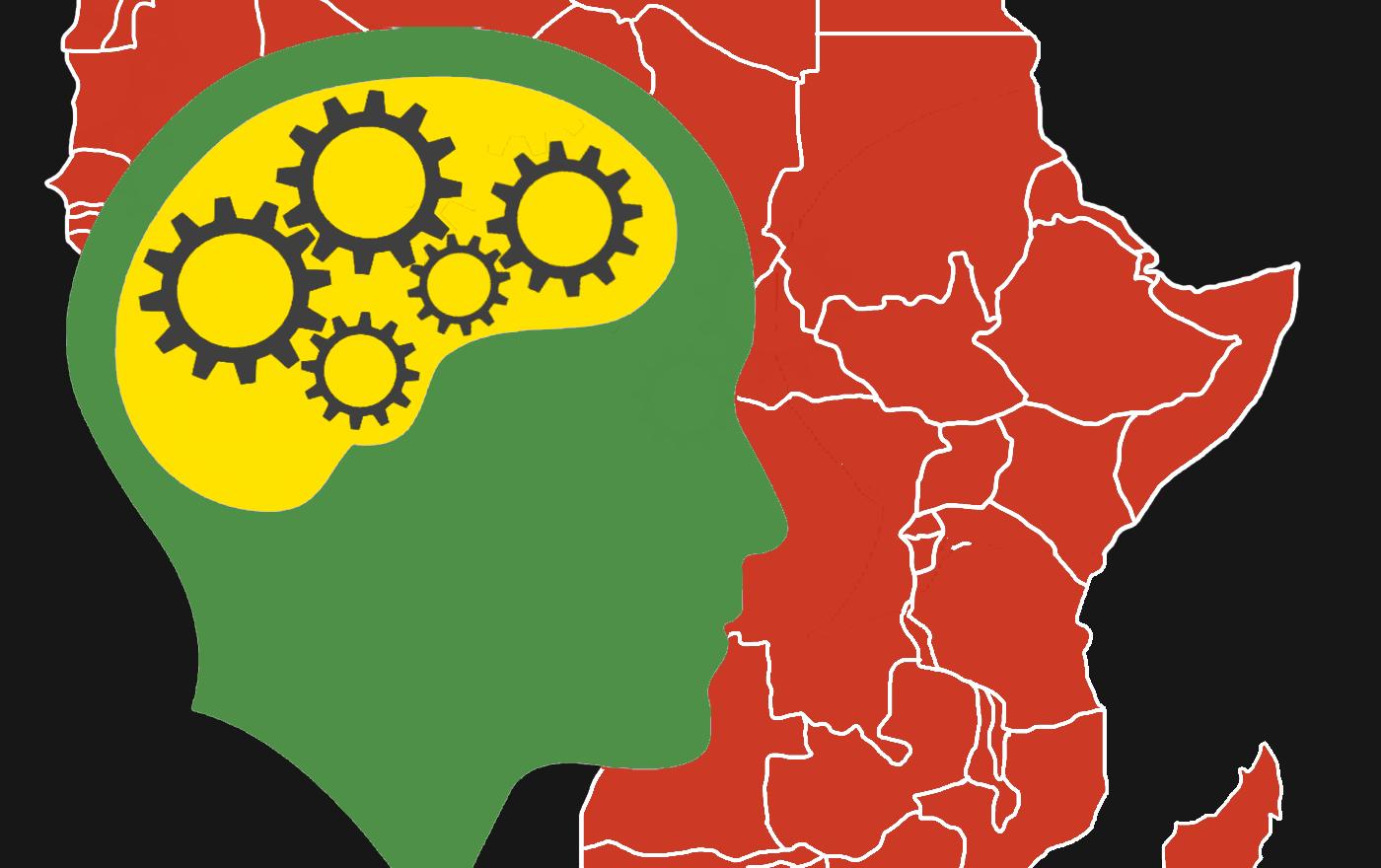
world’s population,” said Adebara. She has worked with researchers to build a language generation model that supports 517 African languages and varieties.
Adebara loves discovering new linguistic features and seeing positive reactions from the communities that she works with.
“There’s a lot of bias where people feel like foreign languages are more prestigious than their [Indigenous African] language,” she said. “Now, seeing their language being used within the technology space, makes them feel excited and feel
like, yeah, our language is actually developed. It’s not inferior to any other language. That is something I’m really excited about.”
Adebara hopes her work can broadly promote linguistic diversity and representation in A.I.
The rapid developments in NLP may benefit language preservation and learning, but there is also lots we don’t know about how computer models treat linguistic data.
Both Adebara and Dr. Garrett Nicolai, assistant professor in linguistics and program director of the Masters of Data Science in Computa-
tional Linguistics program, stressed the importance of using language technologies responsibly.
“Computational models are really, really good at picking up patterns. So if there is a signal in there biased in a certain direction, it will pick it up,” said Nicolai, “It’s not just a linguistic representation issue … they tend to produce negative [social] stereotypes.”
Nicolai said that means we should never trust AI blindly.
Nicolai works with NLP and Indigenous languages in Canada.
The challenge of working with
under-represented languages, he says, is that there are “just no resources. You’re often going in blind when you’re trying to build a model.”
On the bright side, revitalization efforts for some Indigenous languages have led to linguists documenting them. Nicolai and colleagues have developed a computational system for Gitksan, a northern BC First Nations language, using data from previous efforts to document the language.
Nicolai also emphasized that computational tools for low-resource languages need to be developed in ways that meet the needs of that language community.
“We don’t want to just create tools and say ‘here are these tools that we developed and they’ll help you learn your language better,’” he said. “It’s very important that we work with the communities to find out what sorts of tools are actually useful to help encourage new speakers of the language but also … make it easier for them to learn with.”
This can be as simple as developing a dictionary for a language, something often taken for granted by high-resource languages.
Adebara’s African language models are publicly available “to ensure that all people can have access,” so they can be used in more applied ways.
“Working on Indigenous languages is so important. It’s really important for preserving culture … Each language encodes wisdom in it that oftentimes, you can’t translate into another language.” U
EDITOR TOVA GASTER SCIENCE MARCH 19, 2024 TUESDAY 23 MOTHS TO A FLAME OR MOTHS TO A FLOWER? //
As dusk turns into night, an LED lights up the sheet and the wait for fluttering begins.
An estimated 2000 languages are spoken in Africa.
SASHA SINGH / THE UBYSSEY
COURTESTY EVA BURGHARDT

ADVERTISEMENT







 Bea Lehmann Senior Staff Writer
Bea Lehmann Senior Staff Writer

 Morris Hayes Staff Writer
Morris Hayes Staff Writer
 Aisha Chaudhry News Editor
Aisha Chaudhry News Editor

















































































